Catherine the Great and the Transformation of Russia Read Online
From aboriginal tales to modern novels, we bring you a pick of books that can all be considered timeless classics. Many of them are role of the school program, non just in Russia.
1. The Tale of Igor's Entrada (1185)
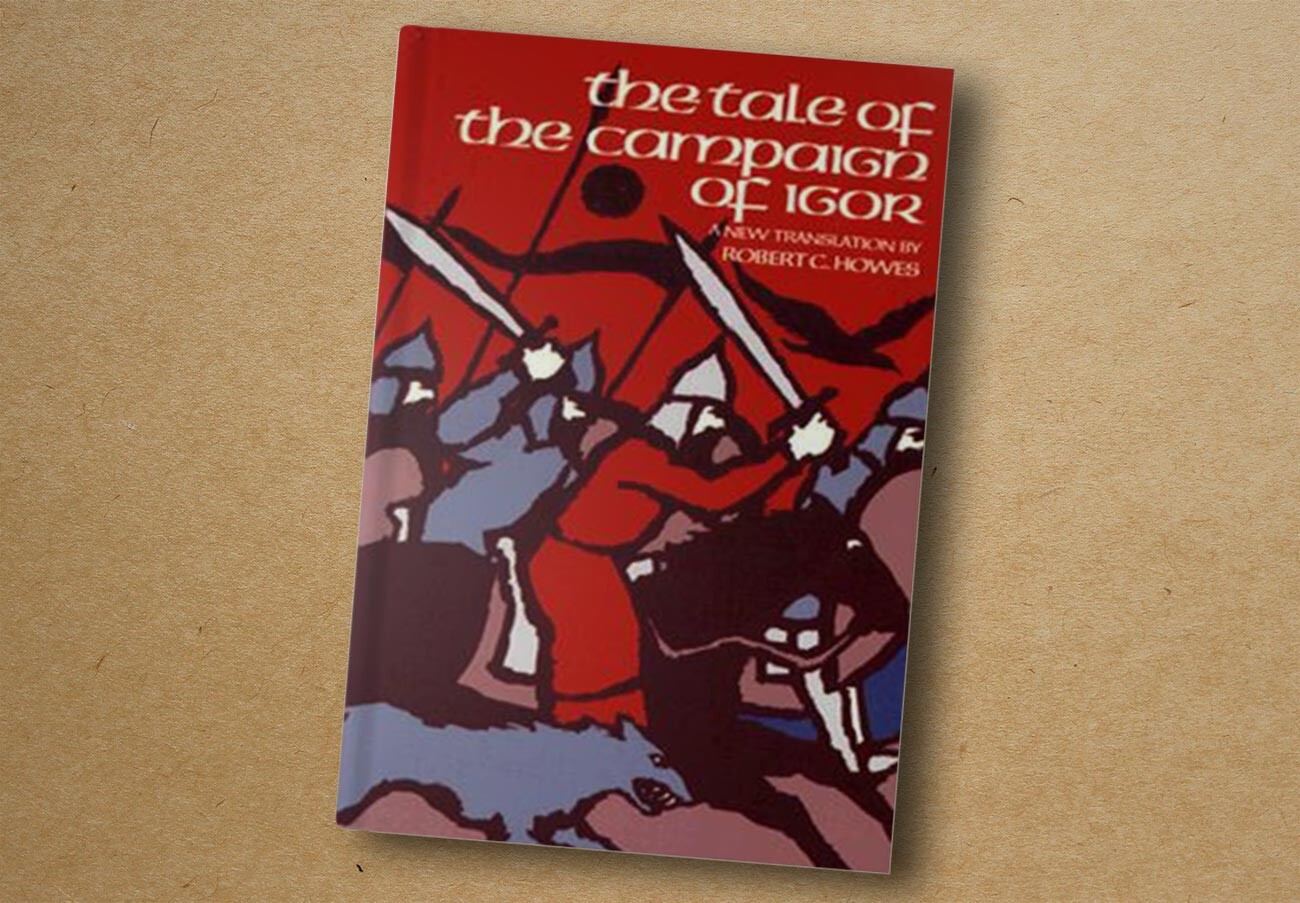
Due west. Due west. Norton; 1st edition, 1973
This "tale of woe" most Prince Igor's unsuccessful campaign against the Polovtsians, a Turkic nomadic people, is one of the oldest surviving works of Russian literature, believed to accept been written around 1185. The piece of work, which is very complex in structure, encompasses several genres: heroic tale, song and ballsy. According to Dmitry Likhachev, an eminent 20th-century Russian medievalist and linguist, the purpose of the Tale was not to evidence in detail the prince's campaign itself, but to expose the shortcomings of feudal fragmentation in Russia. The piece of work influenced many writers, and since the 19th century Russian poets have created ever more than modern "translations."
2. The Life of Archpriest Avvakum, Written by Himself (1672)
It is with the genre of hagiography that all ancient Russian literature substantially begins. The chronicler monks canonically described the righteous lives of saints and the miracles they performed. "The Life of Avvakum" differs in that it was compiled during his lifetime, and by himself. The text is replete with references to specific people, names of places and details of his life. Avvakum also mentions miracles, listing cases when he healed people or saved them from demons. That said, the main theme is the church reforms of Patriarch Nikon (whom he labelled an backslider) and the nascence of the Russian Former Believers, which, as the leader of the schism, ultimately led to Avvakum'southward execution. His biography was banned for near 200 years, and when it was finally published, in 1861, information technology acquired a sensation. It influenced Tolstoy, Dostoevsky and many other writers. Read more here.
three. Russian folktales
Folktales were passed downward orally from generation to generation; fifty-fifty adults listened to them in the evening while weaving or sewing or doing other piece of work. They were everyday moralistic stories, fables most animals and fantastic creatures, fairy tales nearly princesses and princes. They essentially shaped the national character and cultural code.
READ More than: ten master Russian fairy tales
All Russian writers and poets were brought up on Russian folktales; many repurposed or adjusted them for use in the own works. Some of their creations have go and so entrenched in the people's psyche that not everyone remembers which are genuine folk stories and which are the product of a unmarried writer'southward imagination. A groovy contribution to the preservation of Russia's folklore heritage was fabricated by Alexander Afanasiev, who wrote down the principal tales and published the most comprehensive collection, entitled "Russian Folk Tales" (1855-63).
four. Alexander Radishchev. Journey from Petersburg to Moscow (1790)

Columbia University Press, 2020
As a ceremonious servant, Radishchev traveled many times betwixt Russia's two capitals and observed the lives of the peasants forth the mode. He wrote a grim and true report on life in the Russian countryside, and expressed very bold views about serfdom and the shortcomings of the social order. Having read the piece of work, Catherine the Not bad was furious, ordered it to be banned (it was published simply in 1905), and branded the author "a insubordinate worse than Pugachev." Radishchev was imprisoned and sentenced to expiry, just this was commuted to exile in Siberia. He was i of the get-go Russian authors to suffer for telling the truth.
v. Nikolai Karamzin. Poor Liza (1792)
A tear-jerking story of how a nobleman seduces a peasant girl and abandons her after a night of honey. The piece of work is considered a model of the Russian sentimental tale. "Poor Liza" captivated readers with its unusual plot and tragic denouement. Moreover, Karamzin eschewed highfalutin language, becoming 1 of the first writers to use a uncomplicated style.
6. Alexander Griboyedov. Woe from Wit (1822-24)
This comedy in verse marked a real revolution in Russian drama: written in unproblematic language, it destroyed all the canons of 18th-century classicism and became the outset realist play. "Woe from Wit" is still a regular at theaters across Russia, and the names of the characters have become bywords. The action takes identify in Moscow, x years afterward the Patriotic State of war of 1812 against Napoleon.
READ More: iii reasons to read 'Woe from Wit'
A young man of progressive views, Alexander Chatsky, arrives home from away. He goes to visit his young sweetheart Sofia, with the intention of asking her male parent for her hand. Nevertheless, information technology turns out that Sofia has fallen in beloved with some other, not entirely pleasant, homo, who is trying to ingratiate himself with everyone. The "reborn" Chatsky feels like a stranger in his own land and quarrels with everyone... Read more than about the play hither.
vii. Alexander Pushkin. Eugene Onegin (1823-1830)
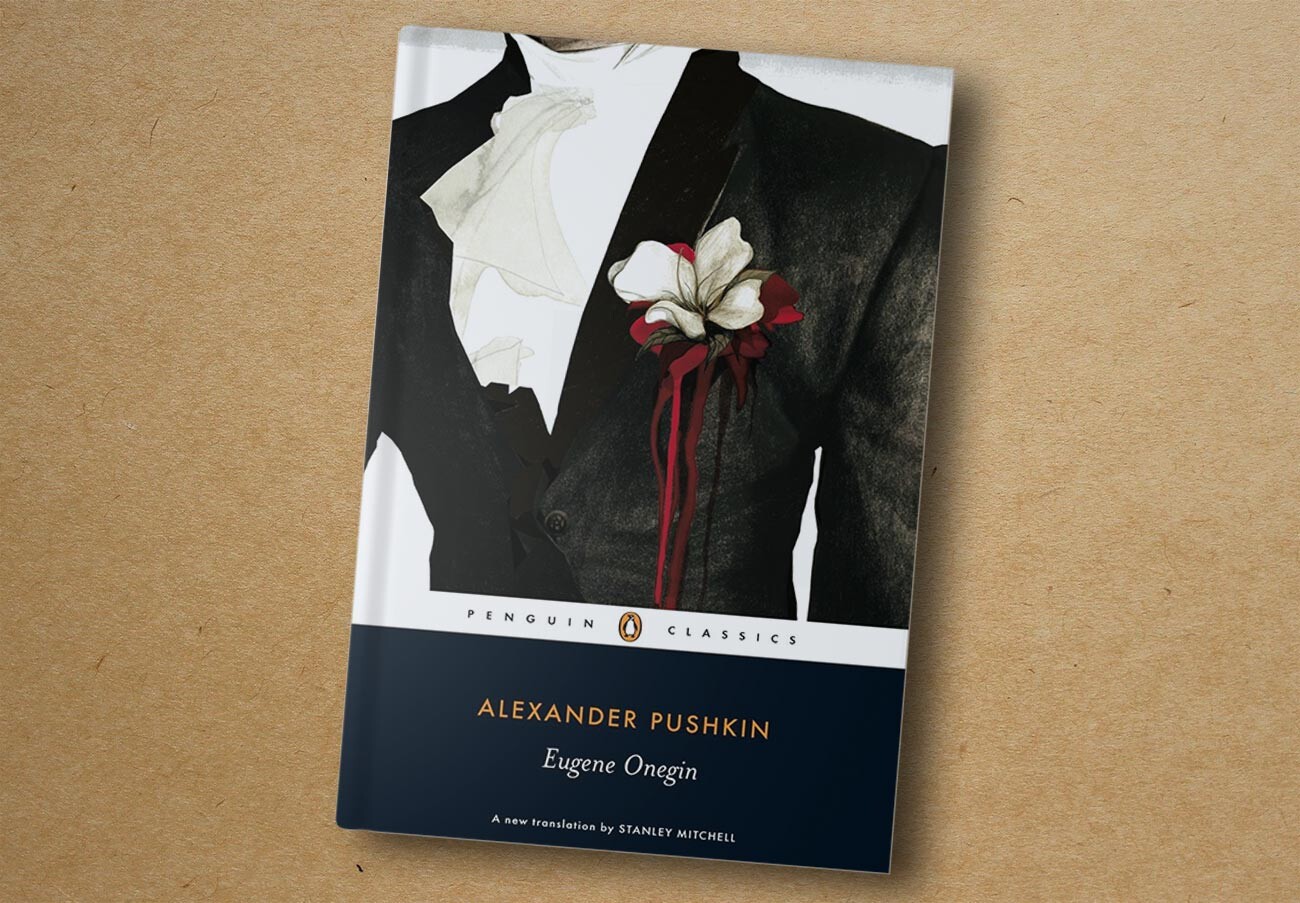
Penguin Classics, 2008
This novel in verse is considered not only the pinnacle of Pushkin's oeuvre, but an entire "encyclopedia of Russian life." The author paints a picture of a provincial estate and state living, with depictions of secular Petersburg and old Moscow.
Onegin, a young aristocrat from the capital, arrives in the village. He chop-chop becomes bored and seeks entertainment, merely finds himself engulfed in a real drama: a neighbor'due south girl, Tatyana, confesses her honey for him, and another neighbor, Lensky, who happens to be his all-time friend, challenges Onegin to a duel over Tatyana's flirtatious sister...
The work is almost impossible to interpret due to Pushkin'south poetic wizardry and invention of the "Onegin stanza" with its precise construction and rhyme. Outside Russian federation, it is appreciated more as an opera, namely Pyotr Tchaikovsky'south in 1877-78.
8. Alexander Pushkin. Boris Godunov (1825)
Another of Pushkin'due south works to be "opera-ized" - this fourth dimension by Modest Musorgsky. Equally a play, it has been staged endless times and adapted for screen. In the drama, inspired by Shakespeare's histories, Pushkin recounts i of the nigh mysterious episodes in Russian history: the murder of Tsarevich Dmitry, the 2nd son of Ivan the Terrible, the Time of Troubles and the appearance of the impostor Fake Dmitry. Thanks to Pushkin, Boris Godunov is remembered in the public consciousness equally the instigator of the murder of Tsarevich Dmitry, for which he was punished by fate.
9. Alexander Pushkin. The Tales of Belkin (1830)
Pushkin is valued in Russian literature primarily every bit a poet, but he also excelled as a dramatist and prose author, as shown in this gripping cycle of five stories. There'south a sentimental tale about a noblewoman who dresses upwardly every bit a peasant girl to brand the associate of a handsome neighbor, while their fathers are feuding. And a romantic story about a duel in which one of the participants postpones his shot and invites his opponent to settle the affair several years later. And the incredible story of an officer who accidentally gets married...
10. Alexander Pushkin. The Bronze Horseman (1833)
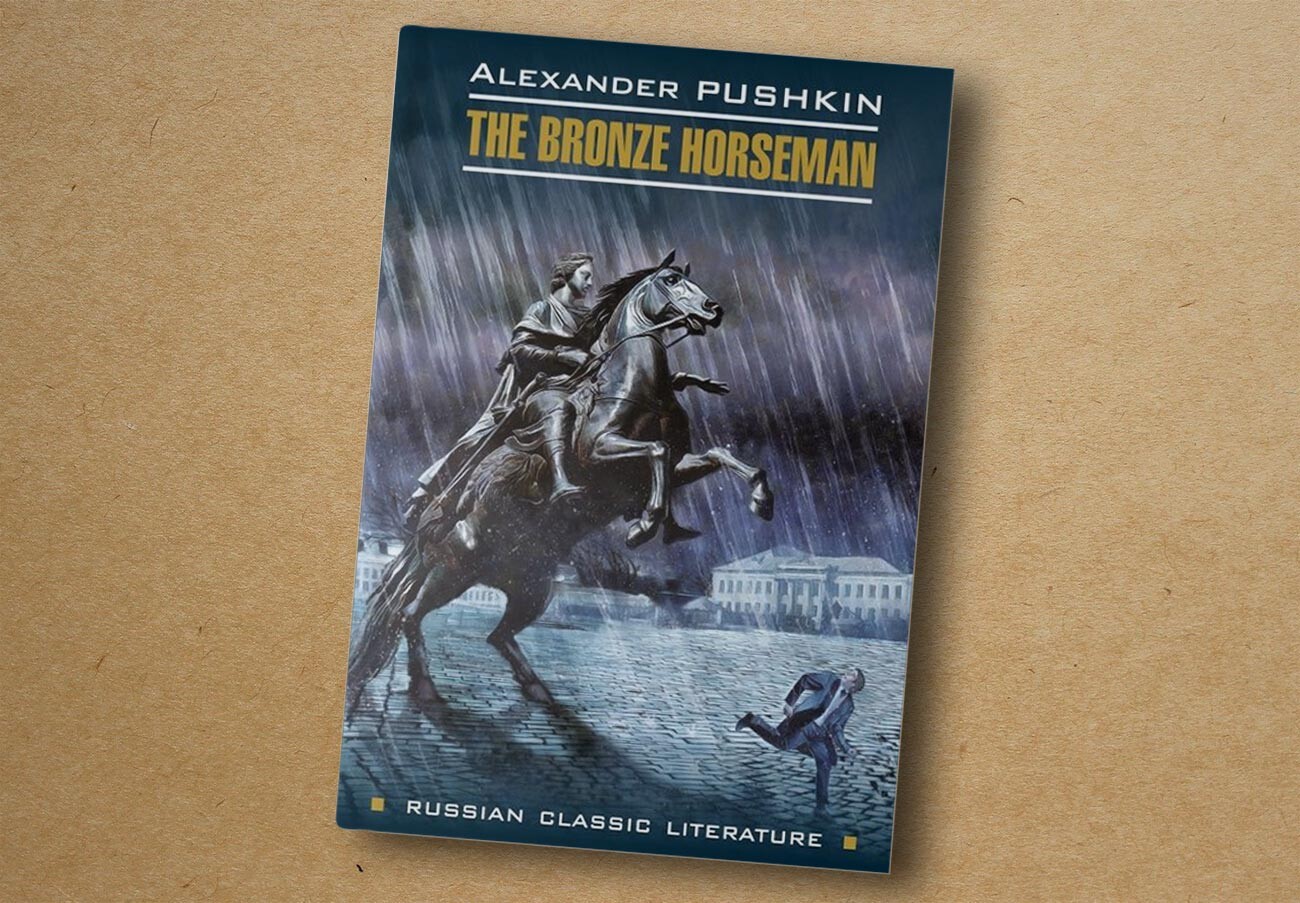
Karo, Russian Classic Literature, 2018
This story in verse is a paean to St Petersburg. "I honey yous, Peter's cosmos" is one of the most famous quotes from the work. The title of the story comes from the nickname of the famous equestrian monument to Peter the Great, which has become a symbol of the city. Although the piece of work eulogizes the urban center's architectural elegance, the main plot revolves effectually a tragic real-life effect: the great flood of 1824, which decimated the city. The protagonist, again called Eugene, discovers that the business firm of his bride has been swept away and she has perished. He goes crazy and wanders around the city, observing the devastation and blasphemous the city'due south founder, who doesn't take kindly to criticism...
eleven. Alexander Pushkin. The Queen of Spades (1833)
Another tale of madness, this time as a result of gambling. To learn the old countess's hole-and-corner of success in cards, the young Hermann enters her bedroom and threatens her, whereupon she dies of fright. Later he encounters her ghost, who names the winning sequence of cards that he must play: "Three, seven, ace..." The 3 and the seven are winners, but the ace magically morphs into the queen of spades bearing the face of the onetime countess, who seems to wink at him mockingly. The work was a blast striking in Europe, and again inspired Tchaikovsky to write an opera of the aforementioned name.
12. Alexander Pushkin. The Captain'south Daughter (1836)
"The Captain'south Girl" is an historical novel about the peasant insurgence led by Yemelyan Pugachev that swept across Russia in the 18th century. Only more than than that, it is a tale of honor, duty and dearest.
READ MORE: five questions nearly Pugachev'due south Rebellion
The young Petya Grinev goes to serve at a remote border fortress. On the fashion, a stranger helps him observe his way in a heavy snowstorm. In gratitude, Grinev gives him his sheepskin coat, an act that afterward saves his life, for the stranger turns out to be none other than Pugachev himself. The novel is worth reading if only for the prophetic phrase: "God save united states of america from seeing a Russian defection, and then senseless and merciless."
13. Mikhail Lermontov. A Hero of Our Time (1839)

Penguin Classics, 2001
Lermontov is considered Russia's 2nd poet (after Pushkin), valued for his abundant and cute romanticist poems and verse, which dissimilarity practiced and evil, the sublime and the sordid, liberty and captivity.
"A Hero of Our Time" is Lermontov'south only prose novel. The protagonist Pechorin is somewhat reminiscent of Pushkin'southward Onegin: cold, unable to beloved, risks his life for the sake of amusement. The novel consists of several chapters, each describing individual episodes in Pechorin's life. To brainstorm with, nosotros read most the hero in the 3rd person, but, as the novel progresses, the eyes narrow in, culminating in a outset-person confession.
14. Nikolai Gogol. Evenings on a Farm near Dikanka (1829-1832)
These stories are set in a pocket-sized village in modern-solar day Ukraine, then on the edge of the Russian Empire. Gogol makes all-encompassing use of Ukrainian words, even providing his ain glossary, equally well as images of local lore. In the stories, he describes "Piffling Russian" (Ukrainian) customs and folk way of life. The stories are extremely diverse, ranging from the merry "The Night Before Christmas" to the blood-curdling "A Terrible Revenge." At the same time, evil spirits, devils and witches are all properly formed characters each with their own personality. The collection was warmly received past contemporaries: Pushkin, for example, extolled Gogol'south lively language and bright imagery.
fifteen. Nikolai Gogol. Mirgorod (1835)
This collection is considered a kind of sequel to Evenings on a Farm. Plot-wise they are unconnected, but are similarly based on Ukrainian folklore. Of the iv stories, two are famous and accept been fabricated into films: "Taras Bulba" tells of a Zaporozhian Cossack and his 2 sons, while "Viy" is possibly the most terrifying work in Russian literature.
16. Nikolai Gogol. Expressionless Souls (1835)
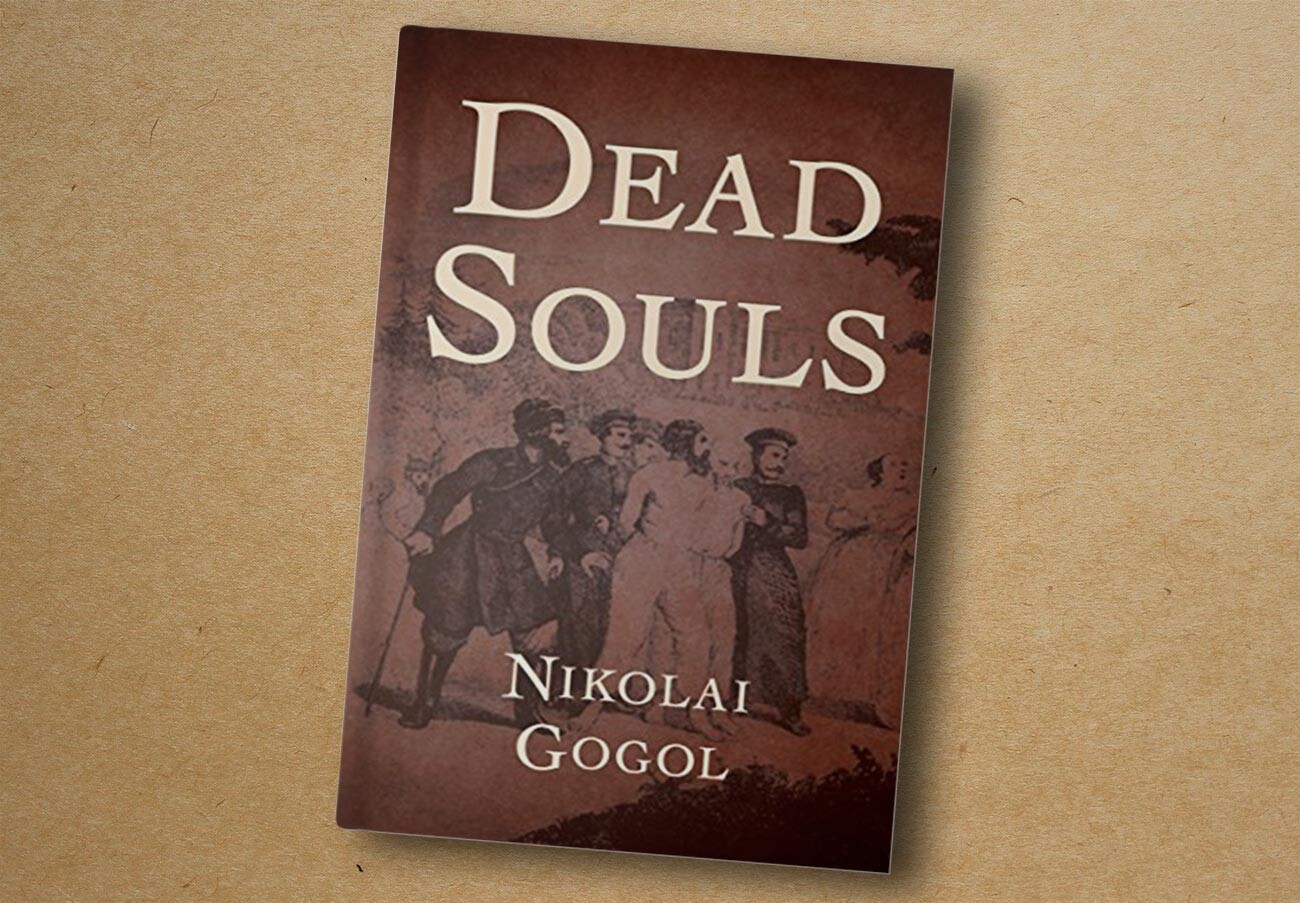
Open Road Media, 2016
Although information technology was written in prose, Gogol himself described this work as a poem - in the antique sense of a Dantesque journey through the "circles of hell", with lengthy lyrical digressions about Russia and her long-suffering people. The work is considered the pinnacle of Gogol'due south artistry and one of the keys to agreement the Russian soul.
The plot revolves around the piffling nobleman Pavel Chichikov, who, arriving in a provincial town, pretends to be a wealthy landowner to proceeds prestige. The only snag is that he doesn't ain a single "soul", i.e. serf. So he resorts to casuistry, aided past Russian hierarchy itself, which at that time made information technology possible to buy upward "dead souls" from local landowners - deceased peasants still recorded as alive on the country register (population censuses in those days were rare and rough at all-time). The landowners, each more than comically grotesque than the previous, react differently to Chichikov's proposal...
17. Nikolai Gogol. The Government Inspector (1835)
One of the almost historic Russian comedies almost corruption, sycophancy and officialdom's attitude to ordinary people. This play is still regularly staged in theaters across Russia and the earth. In the story, a small provincial town is expecting an incognito visit from a government inspector from St. Petersburg. Nevertheless, a pocket-size official who happens to exist in the boondocks is wrongly identified equally the important guest. He decides to exploit the lickspittle mayor and his subordinates by accepting bribes and even the mayor's daughter in spousal relationship...
eighteen. Alexander Herzen. Who Is to Blame? (1841-1846)
The title of the novel is a perennial question for Russia. Written by publicist and revolutionary Herzen, the work is considered ane of the showtime examples of Russian realism. The author explores the influence of instruction on the germination of a person'southward character and personality. Who is to blame for the fact that people are unhappy? In add-on, Herzen sharply contrasts thinking, educated folk with those who atomic number 82 an idle lifestyle. At the same time, it is a novel about love and the importance of mutual understanding.
nineteen. Ivan Goncharov. Oblomov (1847-1859)
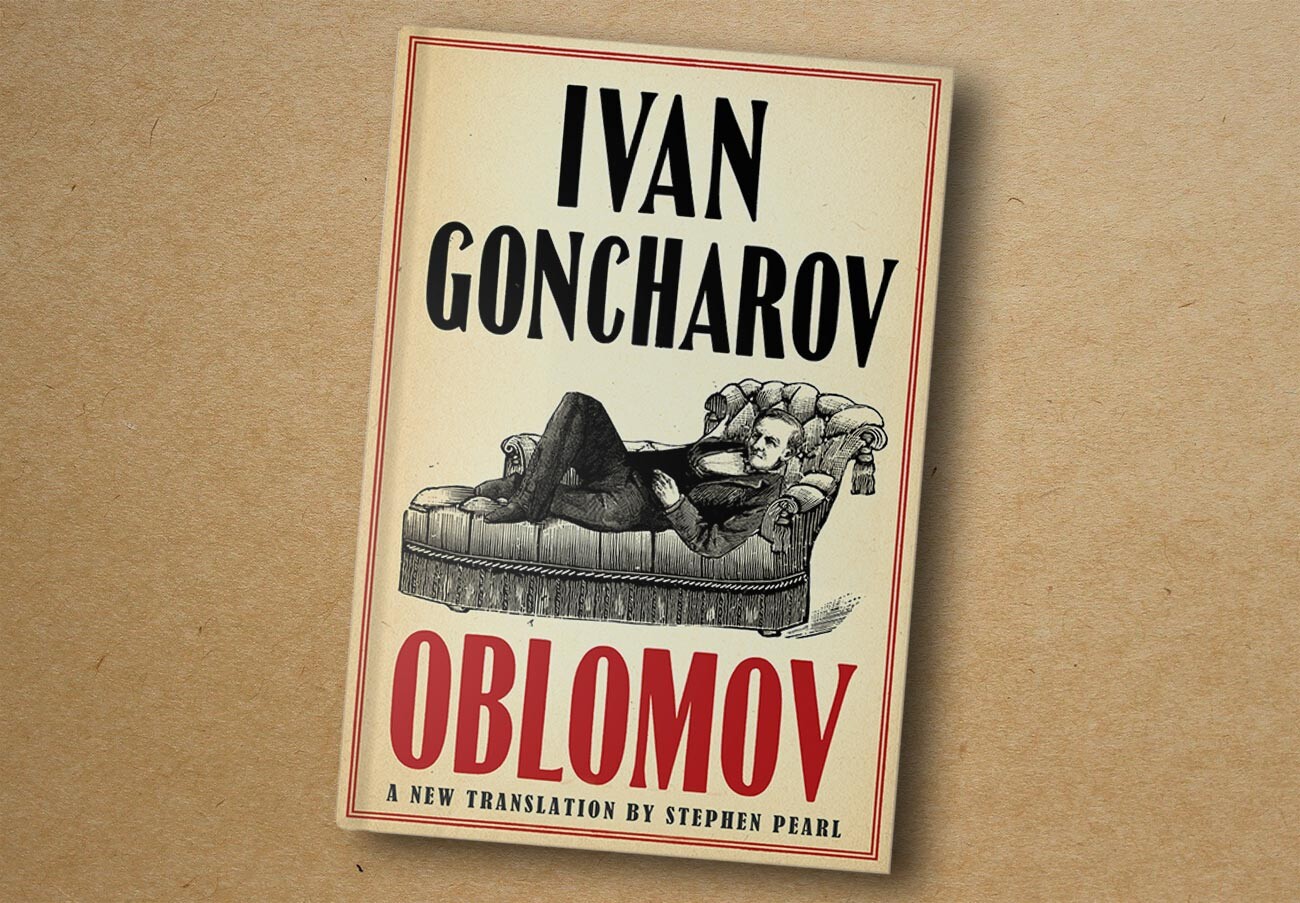
Alma Books Ltd, 2021
This novel nearly peculiarly Russian laziness introduced the concept of "Oblomovshchina" into colloquial Russian speech. Goncharov's anti-hero, Ilya Oblomov, does nothing except loaf around. He is a landed nobleman, which means he has no need to work... His childhood friend and polar opposite, the enterprising Andrey Stolz, does everything for him. The only moment in life when Oblomov briefly emerges from his sleep is when he falls in love. But can such a human being really commit to spousal relationship? Interestingly, the author remains impartial, siding with neither the indolent Oblomov, nor the rationalist Stolz. Read more about "Russian laziness" here.
twenty. Ivan Turgenev. A Sportsman'southward Sketches (1847-1851)
These stories by Turgenev were based on real episodes that occurred on the family estate. The author introduces a panoply of characters and personalities from the Russian countryside with their everyday travails. The stories were offset published sequentially in the literary magazine Sovremennik, then issued equally a split up book. The work was considered groundbreaking in its day: Turgenev was the first to take such a broad await at the Russian people.
21. Ivan Turgenev. Mumu (1852)
This brusk story is 1 of the saddest in all of Russian literature, which is saying something. And the main characters - the peasant Gerasim and his dog Mumu - are household names. Without unnecessary spoilers, it is a story virtually how tyrant landowners in Tsarist Russia abused their serfs and treated them like clay...
22. Ivan Turgenev. A Nest of Gentlefolk (1856-1858)

Penguin Classics, 2020
Turgenev raises issues of the dignity, the confrontation between Russian federation and the Due west, and the question of moral principles.
Disappointed with life in Europe, Lavretsky returns to his estate in Russian federation to "plow the land," where he soon falls in dearest with the neighbor's daughter Liza. Their honey is mutual, and, having learned about the death of his wife, who remained in Europe, he proposes to her. Nevertheless, it of a sudden transpires that the wife is still alive. Heartbroken, Liza goes to live in a convent...
The novel shaped the epitome of the so-called "Turgenev girl" - an incredibly strong-willed immature woman, raised in a "nest of gentlefolk"; the championship has become proverbial.
23. Ivan Turgenev. Fathers and Sons (1860-1861)
The young Arkady Kirsanov comes home to his father's estate accompanied by his friend Yevgeny Bazarov, a nihilist pupil. Bazarov is studying to be a md and intends to help peasantry. He rejects all authority and argues with his landowner father and Arkady's aristocratic uncle, who both hold liberal views. Just non even a nihilist is allowed to dear...
Russian writers had previously touched on the topic of generational conflict (the same Griboyedov in "Woe from Wit"), but it was Turgenev's novel that really fueled the topic. He also mocked the overly refined gentry, introducing a new progressive hero, and noted that real life lies in toil, not in idleness.
24. Leo Tolstoy. Childhood (1852)
Ane of the first deeply psychological works of Russian literature. Tolstoy skilfully conveys events and feelings as seen through the eyes of a kid. The start function of an autobiographical trilogy, it is the author'southward attempt to examine himself and the nature of a multitude of feelings. Tolstoy puts resentment, shame, embarrassment and excitement - feelings that every child experiences - under the microscope. The hero of the story is picayune Nikolay, who has to get out his beloved female parent and go to Moscow with his male parent. Later she dies, whereupon his happy childhood ends.
25. Leo Tolstoy. War and Peace (1863-69)

Penguin Classics, 2006
Tolstoy's opus magnum, a four-volume epic novel known and loved the earth over. It tells the story of several Russian families confronting a backdrop of crucial historical events, most notably Imperial Russia's war with Napoleonic France. The narrative encompasses love and betrayal, war and hard-won peace, both political and emotional. Tolstoy speaks on behalf of a cast of hundreds of characters (including Napoleon himself), each with their ain unique voice, full of depth and color. For those equally daunted past the novel as the French by the Russian winter, we recommend the Oscar-winning Soviet picture show adaptation directed past the late, not bad Sergey Bondarchuk.
26. Leo Tolstoy. Anna Karenina (1873-77)
Another royal novel by Tolstoy. Merely unlike in "War and Peace", the writer'due south focus hither is not on epoch-defining historical events, merely on the nature of happiness and unhappiness in family unit life. This theme was very shut to the writer's ain middle. What's more than, Tolstoy himself "stars" in the novel: in the person of Konstantin Levin (Lev is Russian for Leo), who, similar Tolstoy, withdraws from high society in favor of plowing the fields with his peasants.
27. Leo Tolstoy. Resurrection (1889-1899)
Tolstoy's last novel, which he considered his best piece of work. It is the story of the redemption of a once promiscuous officer, who seduces the innocent ward of his aunt so abandons her, significant, assuming he tin can just pay her off. For him, it is a trifle, but the girl'southward life is shattered. Years later they come across once more in courtroom: he as a bored juror, she equally the defendant. Upon hearing her harrowing story, the officer experiences an inner enkindling. He follows her to the penal colony to atone for his sin... The novel reflects Tolstoy'due south own spiritual struggles and is considered the elevation of his reflections on the pregnant of life and the nature of goodness. Read more about Tolstoy's books here.
28. Alexander Ostrovsky. The Storm (1859)
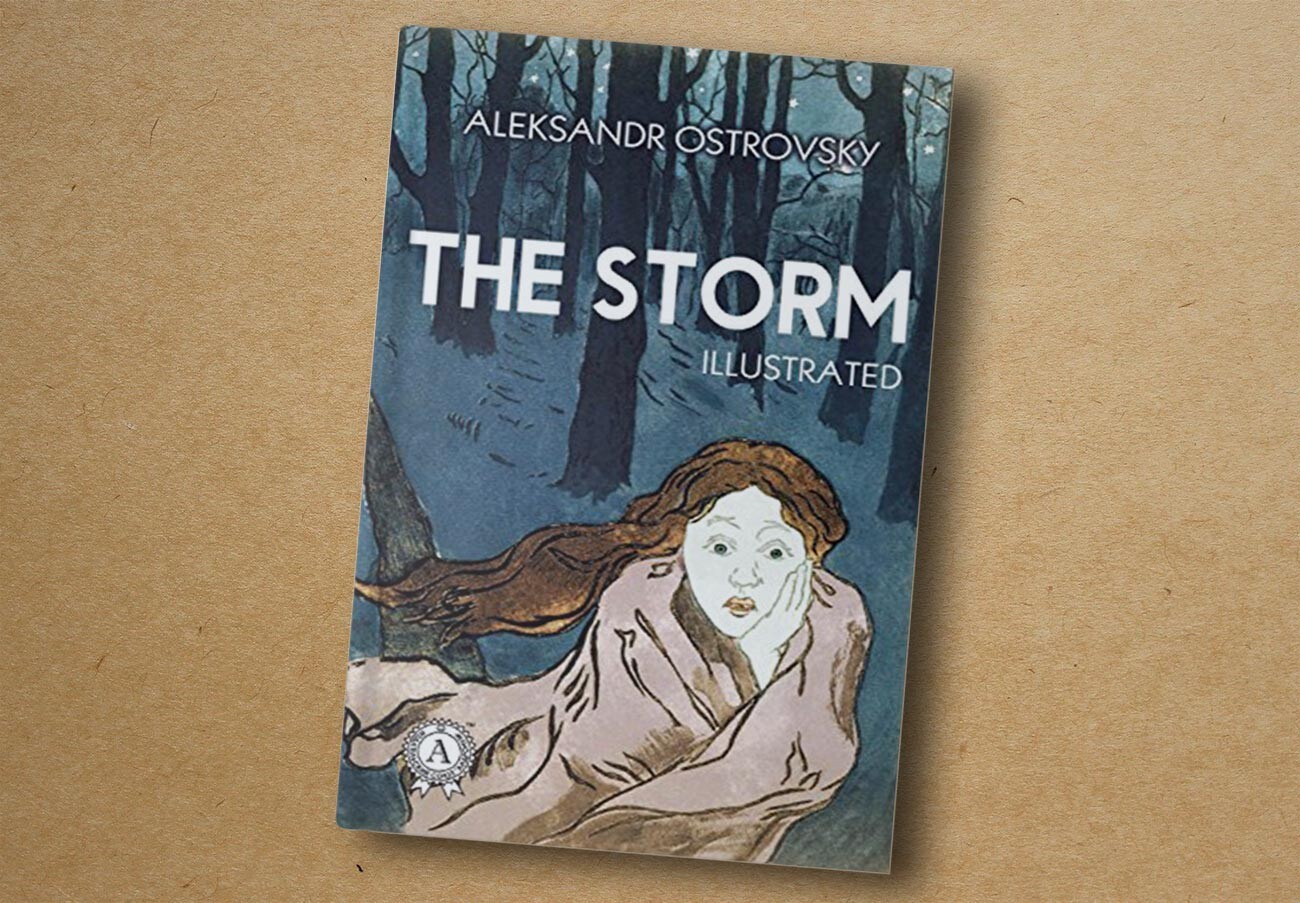
Strelbytskyy Multimedia Publishing , 2017
One of the near popular plays in Russia, the activity takes place in a fictional provincial town, abode to the Kabanovs, a strongly patriarchal merchant family. The young daughter-in-law, Katerina, suffers from her mother-in-law's cruelty and her husband'southward indifference. She remembers the loving temper in her family before marriage. Katerina falls in love with another man and meets him in secret, but, unable to conduct the cant, confesses to her hubby in the presence of her mother-in-police force. For Katerina, there is merely one style out of her predicament...
A contemporary critic described the heroine as "a ray of light in a kingdom of darkness" - she saw further than the ossified society around her, daring to live equally her center, not circumstances, dictated.
29. Alexander Ostrovsky. Without a Dowry (1874-78)
Another play past Ostrovsky dealing with an acute social upshot: spousal relationship of convenience. The beautiful Larisa is very popular with men, just the girl, who lives with her widowed female parent, has no dowry to speak of. In search of a suitable match, the mother receives all kinds of male guests in the house, and Larisa decides to marry the get-go one who approaches her to get away from information technology all... For Larisa still loves the wealthy shipowner Paratov, and he, unable to resist, spends the dark with her, only announces the next forenoon that he already has another, rich bride. To salvage Larisa's honor, the suitors invited by her mother flip a coin - the winner will get to take her away from the metropolis.
The play was coolly received past critics, who chosen it just another piece of work about "a stupid girl who gets seduced." However, it had a major bear upon on Russian drama for the strong female person lead, who is not afraid to go against lodge, and the depiction of a society of men who have forgotten the meaning of honor and nobility. The play was staged in Moscow and Petrograd with neat success, and was subsequently turned into the film "A Cruel Romance", starring Nikita Mikhalkov.
30. Nikolay Chernyshevsky. What Is to Exist Done? (1862-63)
Chernyshevsky wrote this work in a prison house cell, where he had been incarcerated for spreading revolutionary sentiment. "What Is to Be Washed?" sent shockwaves through social club (it inspired Vladimir Lenin and then much that he lifted the title for a political pamphlet of his own). Under the outer beat out of a novel, written partly in response to Turgenev'south "Fathers and Sons", Chernyshevsky lays out his profound thoughts nigh the new economical and social phenomena, about feminism and nihilism. And conspicuously hints at the inevitability of revolution in Russia. Instead of Turgenev's nihilist Bazarov, even so, Chernyshevsky peppers his piece of work with "new people" harboring radical views on how to serve gild.
31. Nikolai Leskov. Lady Macbeth of the Mtsensk District (1864)

Penguin Classics, 2015
Leskov is not well known outside Russia, and still in the West this work, based on Shakespeare's murderous heroine, has been made into a picture. Information technology is the story of the immature merchant's wife Katerina Izmailova, who lives in the Mtsensk district of the Oryol region. Her married man is constantly away on business, and she finds herself solitary and bored in the enormous firm. Katerina duly falls in love with the handsome estate managing director Sergey, and they take a stormy dearest affair, which the male parent-in-police accidentally discovers... To salvage her beloved, Katerina decides on murder, and not just ane.
Contemporary critics were in raptures over Leskov'due south portrayal of the "darkness" of merchant life, tied upward in money and passion, and how he bundled information technology into a tragedy of Shakespearean proportions.
32. Nikolay Leskov. Lefty (1881)
The Russian tsar pays a visit to England, where he is shown a miracle of applied science: a life-size (i.due east. very small) mechanical flea. Back in Russia, engineers are tasked with inventing something even meliorate to amaze the English language. At an arms mill in Tula, a "cross-eyed left-hander" achieves the incredible: he puts a miniature horseshoe on the flea. "Lefty" is rewarded for his work, whereupon he embarks on a drinking bout that leads to his death. In Leskov's time, drunkenness was a national scourge, and this lamentable tale sheds light on the "Russian" grapheme.
33. Fyodor Dostoevsky. Crime and Punishment (1865-66)
The impoverished student Rodion Raskolnikov, barely able to make ends run into, is forced to borrow money from an elderly pawnbroker. Tired of his beggarly existence, he poses himself a philosophical question: am I a trembling beast or have I the right...? To prove to himself that he is master of his own destiny, he resolves to commit a criminal offense, and not just whatever: to murder the old pawnbroker.
Dostoevsky ponders the nature of violence and the circumstances that tin forcefulness a person to accept extreme measures: murder or prostitution, as the protagonist'southward dearest Sonya Marmeladova has to do. The novel is also a profound statement on the search for the pregnant of life.
34. Fyodor Dostoevsky. The Idiot (1868)
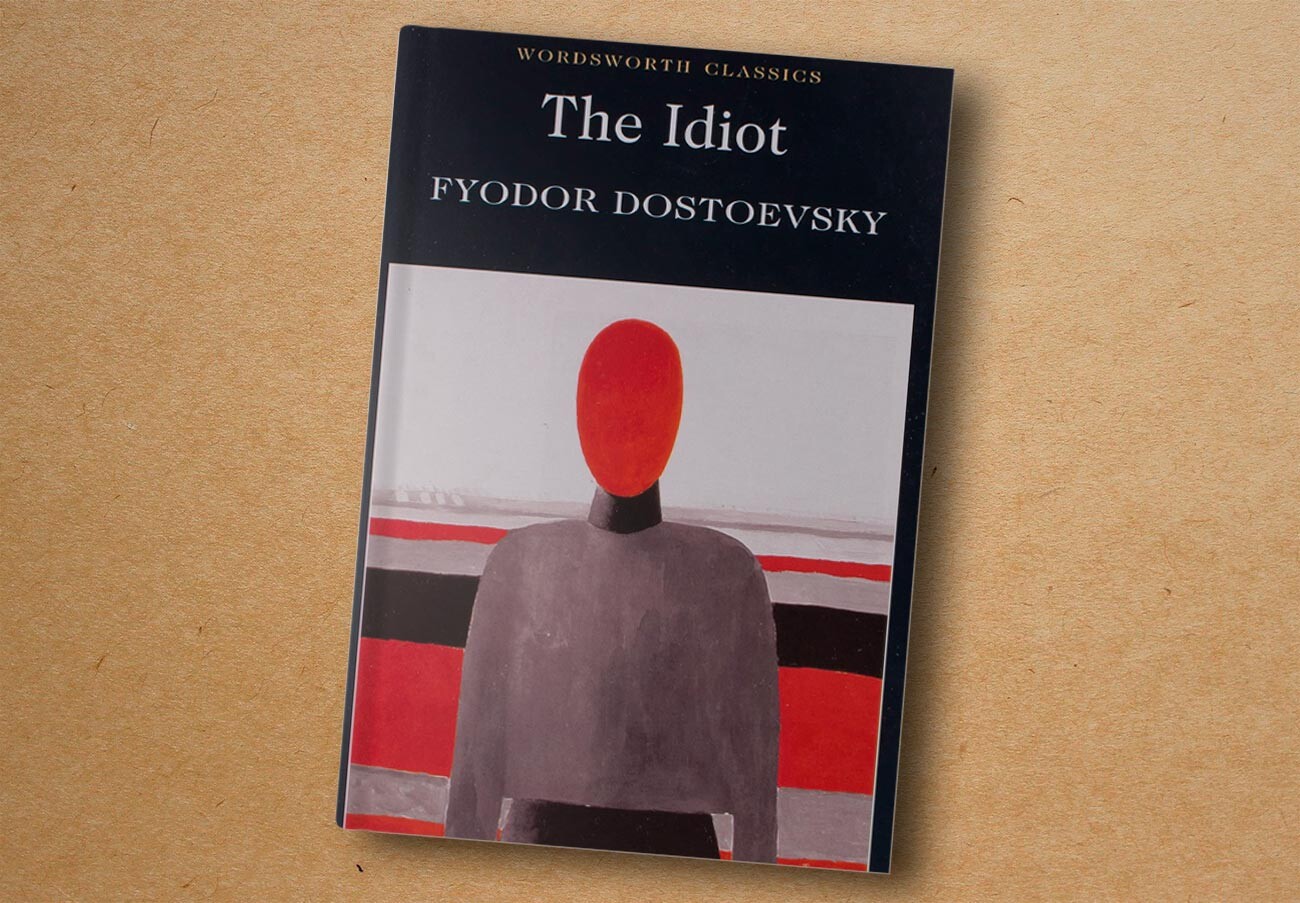
Wordsworth Editions Ltd, 1998
Dostoevsky is known for probing the evil that lurks inside the human soul, only in this novel he depicts not just a positive character, simply an well-nigh ideal person, with Christ-similar characteristics. Prince Myshkin - naive, trusting, unaffected - finds himself at the eye of a whirlpool of passions, but rises in a higher place the crowd of liars and drunkards all around. Even in Nastasya Filippovna, regarded past society as a "fallen" woman, the hero sees just beauty and goodness, becoming imbued with tremendous amore for her.
35. Fyodor Dostoevsky. Demons (1871-72)
After the Byronic, demonic Stavrogin returns home to Russian federation from away, the provincial boondocks where the activity takes place is beset by murder, arson and intrigue... "Demons" is Dostoevsky'south most political novel and expresses his feelings (that is, contempt) for the new radical mood in Russian federation. Information technology was a volatile time, with terrorist groups popping upwardly everywhere and revolutionary ideas penetrating the fabric of order. The avowedly Slavophile Dostoevsky was greatly disturbed by the tendency, which he blamed on Westernizers and nihilists. In light of the October Revolution of 1917, some see the novel as prophetic.
36. Fyodor Dostoevsky. The Brothers Karamazov (1878-1880)
Dostoevsky'south last and arguably greatest novel, and the quintessence of his deep reflections on faith, morality, duty and love. This monumental work is part theological reflection, function detective story: the plot revolves around the murder of the dissolute Fyodor Karamazov past one of his sons. The themes of coin and a father-son dearest rivalry that pre-empted Freud are interwoven into the narrative. The finale features a dramatic courtroom scene, where the witness testimony keeps the reader in suspense till the very end.
37. Mikhail Saltykov-Shchedrin. The History of a Town (1870)

Ardis, 1982
Saltykov-Shchedrin is one of Russian literature's greatest satirists, often compared to Gogol. In this relate of the fictional city of Glupov ("Stupidville"), the author pens a satire on the whole of Russia and its history. The novel chronicles the dominion of several town governors: all bribe-takers, ignoramuses and sinners. To provoke maximum disgust in the reader, the author gives all the characters grotesque attributes and makes extensive use of allegories and phantasmagoria.
38. Mikhail Saltykov-Shchedrin. The Golovlyov Family unit (1880)
Showing no mercy to his characters, Saltykov-Shchedrin paints a bleak moving picture of estate life. It is a novel about the impoverishment and demise of one noble family, and indeed of the entire Russian dignity. The author presents a very different "nest of gentlefolk" - not an idyllic bastion of family values, but the decay and desolation (not to mention apathy and hypocrisy) of landlord life. Perhaps the first example in literature of "toxic" (as nosotros would at present say) family relationships. An overbearing, choleric mother, a loafer son who squanders the family's money, a daughter who elopes with a hussar... The novel was a huge hit with contemporaries.
39. Nikolay Nekrasov. Who Can Be Happy and Free in Russian federation? (1874)
A somewhat Homeric poem, simply based on Russian folklore. Seven peasants argue most who is happy and complimentary in Russia: a priest, a merchant, a wealthy landowner or the tsar? And they fix out on a journey in search of happy people... But volition they notice any? Considering the piece of work exposes the terrible plight of the peasants and criticizes serfdom (as well equally the reforms that abolished it in 1861, which had simply made life worse for both landowners and peasants), Nekrasov had trouble with the censors, who forced him to make changes. Nekrasov was concerned about the fate of Russian women, too, whose unenviable lot he poignantly describes.
READ MORE: How poet Nekrasov searched for happiness in Russia
xl. Anton Chekhov. Brusk stories (1885-1903)

Embassy Books, 2017
Chekhov is considered a master of the brusk genre. The author of the aphorism "Brevity is the sister of talent" wrote more than than 500 tales, which tin exist put on an artistic par with whatever great novel. Despite his success as a writer and playwright, Chekhov connected to practise medicine throughout his life, drawing many of his characters from his broad range of patients. Chekhov wrote many fine brusque stories, as well numerous to mention, only Ward No. half dozen (about private and, more dangerously, commonage madness), The Darling (about a adult female who is subsumed by her married man's interests) and Human in a Case (about fencing oneself off from the exterior globe) are specially unmissable.
READ More: x must-read brusque stories by Anton Chekhov
41. Anton Chekhov. 3 Sisters (1900)
After the success of the plays "The Seagull" and "Uncle Vanya", commissioned past the Moscow Art Theater, Chekhov wrote a new drama, ane that is yet a staple in the repertoire of many Russian and foreign theaters. The three sisters of the title are young, progressive-minded women; their father has died, and they live with their brother and spend all day receiving guests. They make plans to go out their provincial town for the bright lights of Moscow, where they will work and do worthy deeds. But their lofty dreams remain merely that... Very Chekhovian.
42. Anton Chekhov. The Cherry Orchard (1903)
Chekhov'due south concluding play. The bankrupt landowner Ranevskaya is forced to sell her business firm with its lovely cherry orchard. To her horror, the new buyer proposes to cut it down, divvy up the country and rent it out to summer dacha-goers. The play, which ends to the sound of trees being felled, is virtually the decline of the aristocracy. A new ruthless earth is replacing the one-time. A year after it was written, the great theater directors and producers Konstantin Stanislavsky and Vladimir Nemirovich-Danchenko staged it at the Moscow Art Theater to tremendous acclaim.
43. Saying Gorky. The Lower Depths (1902)
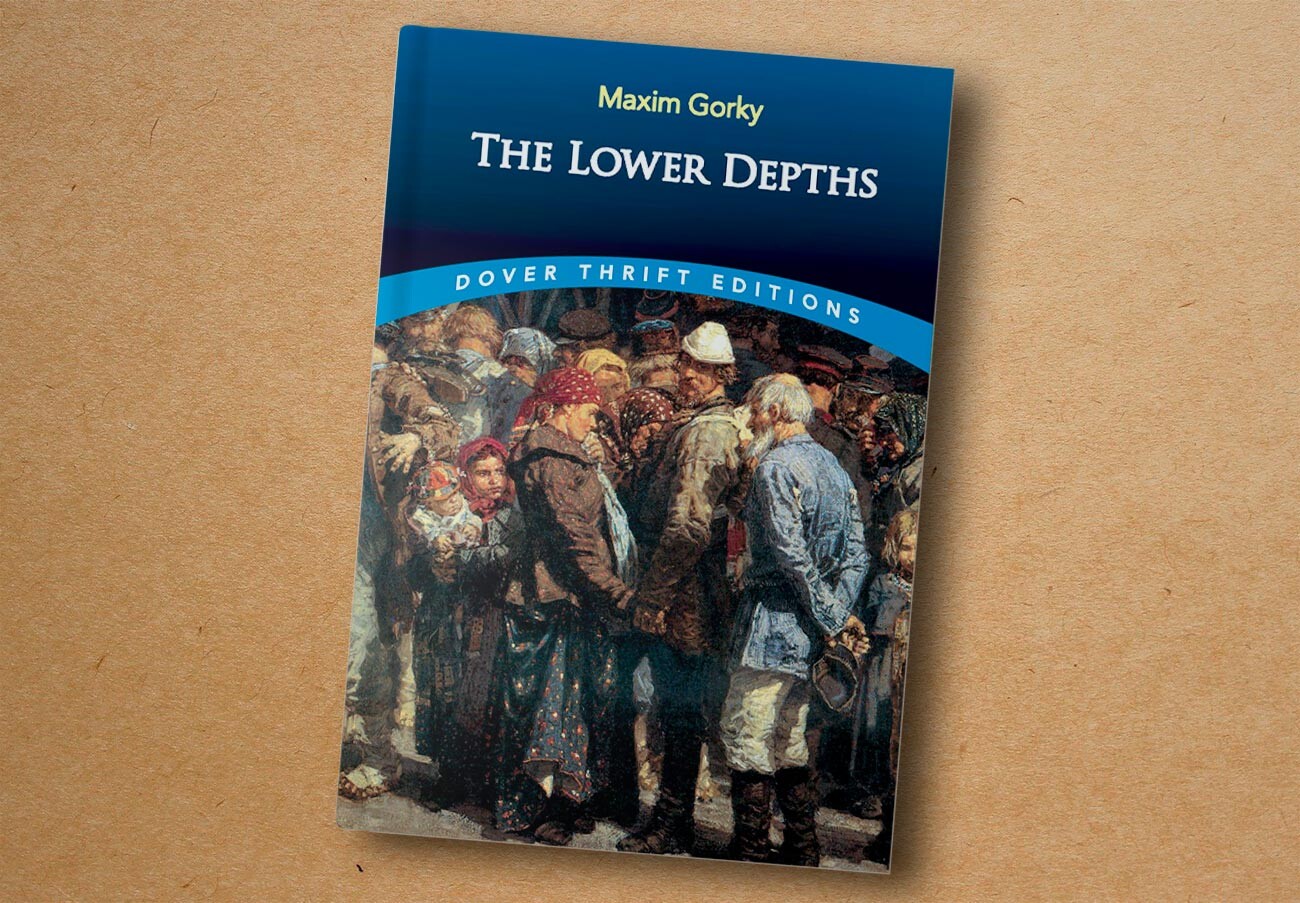
Dover Publications, 2016
The most famous play past the proletarian writer Gorky and a hymn to the lower strata of society. Later reading the drama, Tolstoy exclaimed to Gorky in surprise: "What are you lot writing this for?" He could non imagine that the theater-going public would exist interested in a play most a homeless shelter, depicting prostitutes and alcoholics, quite literally warts and all. However, Tolstoy was proved wrong, and this gritty real-life drama was a not bad success on the phase of the Moscow Art Theater, besides as in Germany.
44. Maxim Gorky. Mother (1906)
A novel near the revolution and the workers' movement. Gripped by revolutionary fever, mill worker Pavel Vlasov discusses social issues with friends and starts distributing leaflets virtually the oppressed proletariat. Nonetheless, he is arrested, whereupon his mother starts handing out leaflets in his place... In 1926, the Soviet director Vsevolod Pudovkin made a silent film based on the novel, which became a classic of early Soviet cinema.
45. Maxim Gorky. Childhood (1913-14)
Like Tolstoy, Gorky wrote an autobiographical trilogy. The first part, Babyhood, is a vivid, colorful story of a boy's life growing upward in Nizhny Novgorod. Maternal love, grandfatherly beatings, the school of hard knocks - Gorky experienced all this and describes Russian provincial life in an incredibly atmospheric way.
READ MORE: five reasons why Soviet writer Maxim Gorky is then smashing
46. Leonid Andreyev. The Cerise Laugh (1904)

Broadview, 2020
Andreyev'due south style is similar a fingerprint: unique. His neurotic literary world is overpopulated with thoughts, words and metaphors. In The Crimson Laugh, written at the height of the Russo-Japanese War, Andreyev, one of the most talented Russian writers of the Silverish Age, addresses the horrors of boxing. The narrator, an artillery officer, finds himself in the midst of the hostilities. He is pursued by a haunting "blood-red laugh", a kind of blood-associated metaphor for the senselessness of war. War is at once "terrible necrotic water ice", "ruddy air", "the resurrected expressionless", "ruddy laughter" and, finally, genuine, murderous madness. If there is one antimilitarist tale capable of evoking a profound physical revulsion for state of war, it is undoubtedly The Cherry Laugh.
47. Leonid Andreyev. The Seven Who Were Hanged (1907)
Andreyev'due south prose explodes like a Molotov cocktail of mysticism, religion, existentialism and symbolism. "It is not death that is terrible, only cognition of it; and information technology would be quite impossible to alive if a person knew the precise hour of his expiry," wrote Andreyev in this gloomy, pessimistic tale about revolutionaries sentenced to the gallows. It is a powerful treatise on life and death, in which the writer's inner state chimes with the feelings of his condemned protagonists.
48. Andrey Bely. Petersburg (1913)
"He is Russian to the very core of his being; inside him Russian chaos stirs," philosopher Nikolay Berdyaev said about Andrey Bely, naming the symbolist author equally the heir to the traditions of Gogol and Dostoevsky. Boris Pasternak compared Bely to Marcel Proust, and called James Joyce "a disciple of Andrey Bely". Similar Ulysses, the modernist Petersburg employs stream-of-consciousness techniques, alluding to the city's foundation by Peter I (the Bang-up) in 1703; St Petersburg itself becomes an artistic unit in its own correct against the properties of the Russian Revolution of 1905.
49. Yevgeny Zamyatin. Nosotros (1920)
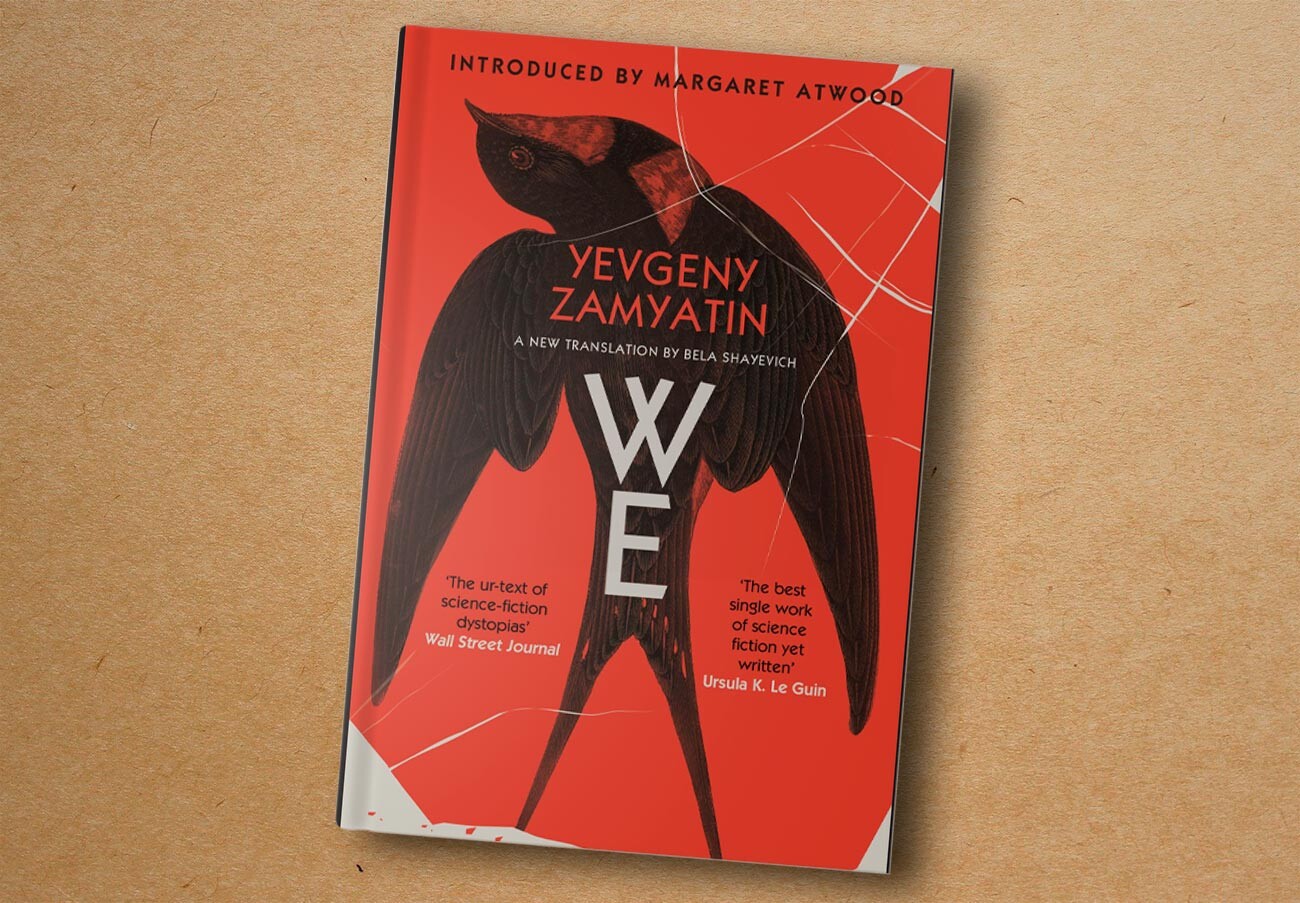
Canongate Books, 2020
In his prophetic dystopian masterpiece, Zamyatin artfully describes a totalitarian state congenital on the principles of total control over the individual. The novel is set in the remote time to come, in a city where everything is ruled past the Time Tablet, which dictates their lives, and people's names, as in a concentration camp, are replaced by letters and numbers, such every bit, D-503 or O-ninety. All citizens of OneState must continue to a rigorous schedule 24-hour interval and night; even love-making is strictly regulated.
For all its frightening realism, Zamyatin'southward "We" finds room for irony and allegory. "We walk - a million-headed body; and in each one of u.s.a. resides that humble joyfulness with which in all probability molecules, atoms and phagocytes alive." Zamyatin's novel shaped the weltanschauung of at least four literary geniuses (George Orwell, Kurt Vonnegut, Aldous Huxley, Vladimir Nabokov), despite never being published in Russian federation during the writer's lifetime. The dystopia was beginning published in its entirety in English language in 1924.
50. Ivan Bunin. Mitya'southward Dear (1924)
In his poignant tale of disturbing love, Bunin paints a psychological portrait of Mitya, a young man with "Byzantine optics" who is caput-over-heels in love with Katya, a student at a private theater schoolhouse. Love, as everyone knows, is just one step (more than precisely, one shot) away from jealousy, specially when unrequited and hopeless. "At that place is nothing on earth or in heaven more terrible, more attractive and more mysterious than dearest," wrote Bunin. How right he was!
51. Ivan Bunin. Nighttime Avenues (1944-1949)
Ivan Bunin, the complete master of short malleable prose, was the boldest of all Russian writers in describing sensual love. "Each of us likely has some especially love love retentiveness or some especially grievous dear sin," he wrote. Bunin raised passion, lust and love to a whole new level in his renowned drove of short stories Nighttime Avenues, defended to the backstage workings of love, the cultivation of feelings and the clash of opposing views.
52. Yuri Olesha. The Three Fat Men (1924)
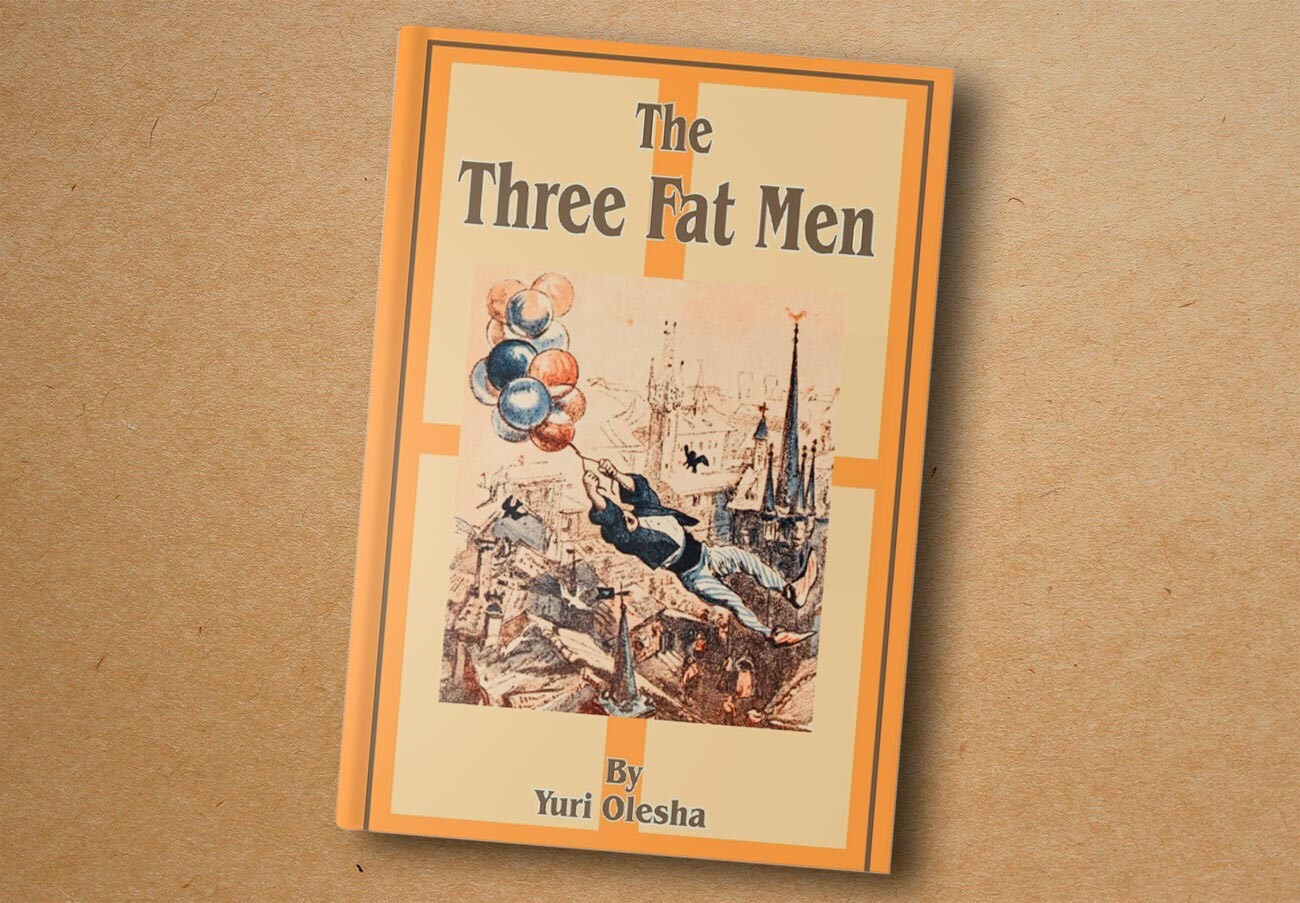
University Press of the Pacific, 2001
Subsequently the publication of "The Three Fat Men", the offset "revolutionary fairy tale" in Soviet literature, Olesha woke upward famous. Afterward all, he had penned a work of truly European dimensions: revolutionary in concept, quixotic in spirit, expressive in content. The novel takes identify in a state ruled past a greedy and insatiable aristocracy, led by the "3 Fat Men". A lonely boy called Tutti is to go their heir. The child is not allowed to play with his peers; his just companion in life is a doll named Suok. Simply information technology's not all bad. An intrepid scientist, the Physician, brings hope of a "vivid future" during an insurgence led past Prospero the Gunsmith and Tibul the Acrobat.
More than one generation of children and adults has been brought upward on "The Three Fatty Men". Translated into many languages, the volume has admirers worldwide.
53. Yuri Olesha. Green-eyed (1927)
Envy marks the top of Yuri Olesha's literary piece of work. "I am convinced that I have written a book that will live for centuries," the author himself claimed modestly. The novel's protagonist, Nikolay Kavalerov, is an intellectual, a dreamer and a poet - an outsider in Soviet reality. The single-minded head of the local meat processing plant, Andrey Babichev, is the polar contrary. Kavalerov has no hope of emulating the "sausage maker" Babichev. Envy is his lot in life. He dreams of adulation, much like a convict dreams of freedom. "In our land, the roads of glory are blocked by barriers... A gifted person must either wither away or heighten the barrier and face condemnation." Kavalerov is the modify ego of Olesha himself, who never managed to adapt to the realities imposed past the builders of communism.
54. Isaac Boom-boom. Odessa Stories (1924)
"Boom-boom wrote about Jews with a brisk, at times scornful knowingness," remarked John Updike. Babel'due south famous Odessa Stories about "gallant" Jewish gangsters and their irreplaceable leader Benya Krik inspired a whole generation of American writers, including Bernard Malamud, Saul Bellow and Philip Roth, to embark on their own literary quests in the aforementioned criminal vein. Born in Odessa, Babel spent about of his time between the hammer and the anvil, trying to remain in touch with his Jewish roots while maintaining a kind of status quo. Humor allowed Boom-boom to distance himself from his characters, non to fraternize with them, while remaining on a friendly basis.
55. Mikhail Bulgakov. Centre of a Domestic dog (1925)

Penguin, 2007
Written in 1925, this novella was published only in 1987. The Soviet censors banned information technology for ideological reasons. At the center of the work, gear up in the mid-1920s, is the brilliant surgeon Professor Preobrazhensky (whose proper noun ways "transformation"), who undertakes an unprecedented experiment. He transplants a homo pituitary gland into a stray canis familiaris, which before his eyes turns into a humanoid beast, who adopts the absurd name Poligraf Poligrafovich Sharikov. He is archaic and uncouth in the extreme, drinking, smoking and swearing similar a crewman.
Sharikov immediately moves into the professor's 7-room apartment in Moscow as the new owner - a metaphor for the revolution and the mail service-1917 dispossession of the bourgeoisie. Although from a scientific point of view, the professor's experiment is a phenomenal success, Bulgakov, with a nod to Kafka's "Metamorphosis" and Mary Shelley'southward "Frankenstein", warns against such "transformations" - ameliorate to let sleeping dogs lie, quite literally.
56. Mikhail Bulgakov. The White Guard (1925)
Bulgakov was born in Kiev (then part of the Russian Empire) into a large family. The warm spiritual atmosphere of his childhood is reflected in his masterful play The Days of the Turbins, which he reworked into the epic novel "The White Guard."
"The White Guard" is not simply an outstanding historical novel written in the finest Tolstoyan traditions, but also a "Russian Forsyte Saga" - about a family of Russian intellectuals, and their friends and relatives, who find themselves caught upwardly in the claret-soaked civil state of war that came hard on the heels of the October Revolution.
57. Mikhail Bulgakov. The Master and Margarita (1940)
Bulgakov's greatest novel did not run into the light of day until 1966 in the wake of the Khrushchev Thaw, 26 years later on the author'south decease. It is a satirical and supernatural tale of how the devil and his demonic retinue pay a visit to 1930s Moscow. In this metaphysical work, Bulgakov'due south Satan (called Woland, an aboriginal Germanic name for the devil) is an ambivalent figure, "part of that force that eternally desires evil and eternally does good." Woland opposes the new evil: bureaucratic, impersonal, Soviet. The just salvation in the novel, as in life, is through love and self-sacrifice. Faust-like, Margarita sells her soul and becomes a witch in club to save the Master, the human she loves. The volume is known for the adage: "Manuscripts don't burn."
58. Ilya Ilf and Evgeny Petrov. Th e Twelve Chairs (1927)
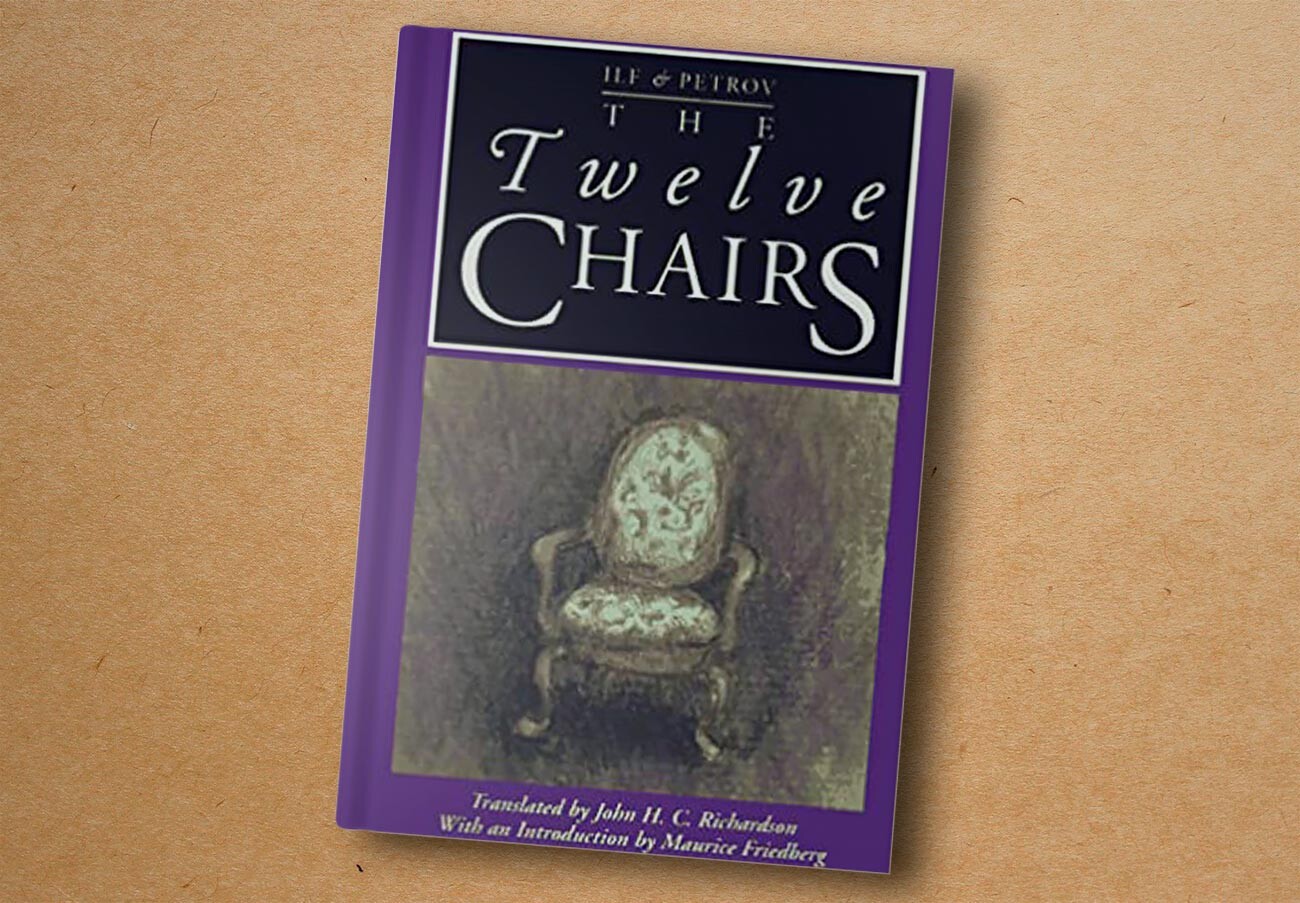
Northwestern Academy Press, 1997
The charming rogue Ostap Bender and his naive sidekick Kisa Vorobyaninov set off in search of Madame Petukhova's diamonds, which are hidden in one of the 12 chairs from the family's dining room set that went missing afterward the revolution. On the adventure-laden style, they hone their skills equally chief conmen. This cult novel is a rich source of sayings and aphorisms, plunging more i generation of readers into the atmosphere of 1920s Soviet Russia. The work is not only a treasure trove of kitchen-sink satire and folk humor, but as well a skilfully veiled mockery of Soviet power and ideology.
59. Ilya Ilf and Evgeny Petrov. The Fiddling Aureate Dogie (1931)
The likeable swindler Ostap Bender is (only just) still alive. In this sequel to "The Twelve Chairs", he attempts to become a millionaire by fair means or foul (mostly foul) and fulfil his babyhood dream of moving to Rio de Janeiro. All he has to do is track down the elusive millionaire Alexander Koreiko and bribery him. What could possibly get wrong?
sixty. Mikhail Sholokhov. And Quiet Flows the Don (1928-1940)
Soviet writer Mikhail Sholokhov wrote "And Quiet Flows the Don" at the tender age of 22. In 1965, he was awarded the Nobel Prize in Literature for this four-volume novel, recognized every bit one of the most significant works of 20th-century Russian literature. A sweeping historical saga near the life of the Don Cossacks during Earth War I and the Russian Civil War, it is saturated with sweat and claret, violence and cruelty, suffering and animalism.
61. Andrey Platonov. Chevengur (1928)
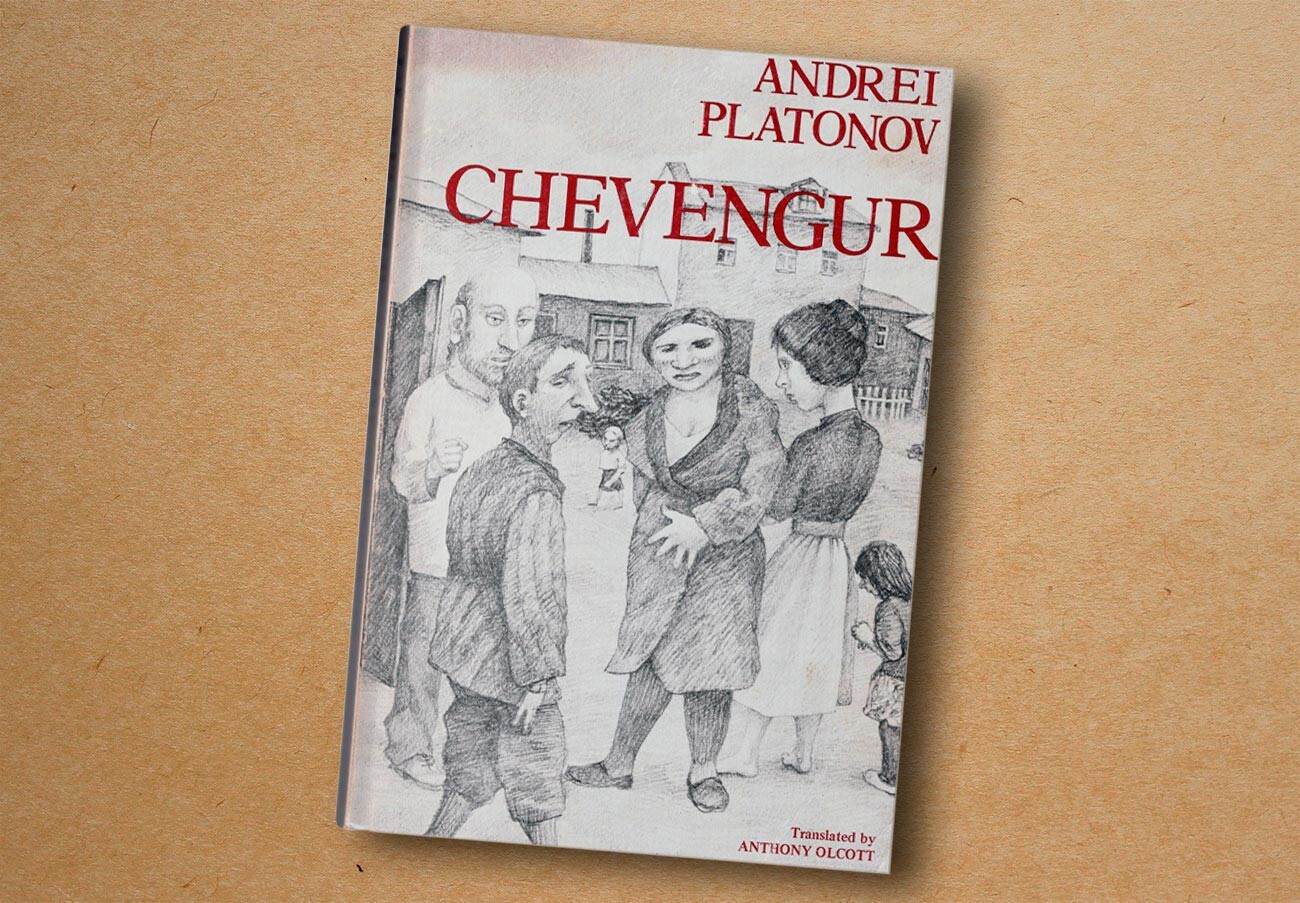
Ardis, 1978
The poet Joseph Brodsky put Platonov on a par with Proust, Kafka and Beckett. In this and other works, Platonov artfully satirizes the utopian Soviet plan for building a socialist order, exposing the bureaucratic nonsense of Soviet ideology.
"Chevengur" (Platonov's merely completed novel) is a behind-the-scenes look at Soviet life during the NEP (New Economic Policy) flow. Chevengur is a utopian urban center where communism is being built at a record stride. The result is an impending catastrophe, which Platonov, who witnessed the Stalinist collectivization, describes with devilish wit and cold-bloodedness.
The novel was actually scheduled for publication, but banned past the censors at the last minute for ideological reasons, stating that Platonov was "rocking the gunkhole" past endangering the very notion of edifice socialism. The novel was not published in full until 1988.
62. Andrey Platonov. The Foundation Pit (1930)
"The Foundation Pit", a gloomy and disturbing novel of Kafkaesque proportions, tells about the "benefits" of communism in the USSR. A grouping of people somewhere in the wilderness are digging the foundations of a "common proletarian home", then that 1 twenty-four hours anybody volition live "happily ever after" in the city of the future. Platonov depicts hunger and death, and workers, peasants and officials stripped of all goodness, focused day and night on an endless, senseless construction project.
Written in 1929-30, "The Foundation Pit" is a biting satire of Stalinism and oppressive bureaucracy that destroys hope and religion in humanity. Pre-empting and echoing George Orwell's "1984", Platonov shows the twisted face of collectivism, devoid of human emotion and feeling.
63. Nikolay Ostrovsky. How the Steel Was Tempered (1934)
This novel became the most published work of fiction in the USSR. Partly autobiographical, information technology charts the rise of the Soviet state through the biography of protagonist Pavel (Pavka) Korchagin. A man of uncomplicated roots, Pavka stands out for his endurance, diligence and selflessness. He joins the Ruddy Army, then the Cheka (secret police).
Through his protagonist, Ostrovsky depicts all facets of life in the young Soviet state, including the most dreadful and problematic. Nonetheless, due to ideological issues, the text of the novel was changed many times, not always with the author's consent. It wasn't until the late 1980s that Ostrovsky's original text was published in full.
64. Vladimir Nabokov. Invitation to a Beheading (1936)

Penguin, 2016
Nabokov's last novel, written in Germany earlier he moved to France in 1937. Although the grim reality of Nazi Germany is reflected in the novel's premise, Nabokov objected to its one-sided deconstruction every bit a political pamphlet. The author himself considered it his best piece of work and his "only poem in prose." Whichever way you slice it, Invitation to a Beheading is a novel about the tyranny of triviality, and how to resist it through the "ancient innate fine art of writing."
65. Vladimir Nabokov. The Gift (1938)
Nabokov'south concluding novel in Russian is a tour de force, considered by many to be the pinnacle of his art. From a philosophical viewpoint, information technology is a meta-novel, a kind of literary wedding block, in which each layer is saturated with a deep existential meaning. Every bit the epigraph to "The Gift", Nabokov borrowed a seemingly simple exercise from a Russian grammar textbook: "An oak is a tree. A rose is a flower. A deer is an animal. A sparrow is a bird. Russia is our fatherland. Decease is inevitable." Life, we are told in Nabokov's timeless novel, is a brief interlude betwixt birth and death, consisting of a k contradictory trifles.
66. Vladimir Nabokov. Lolita (1955)
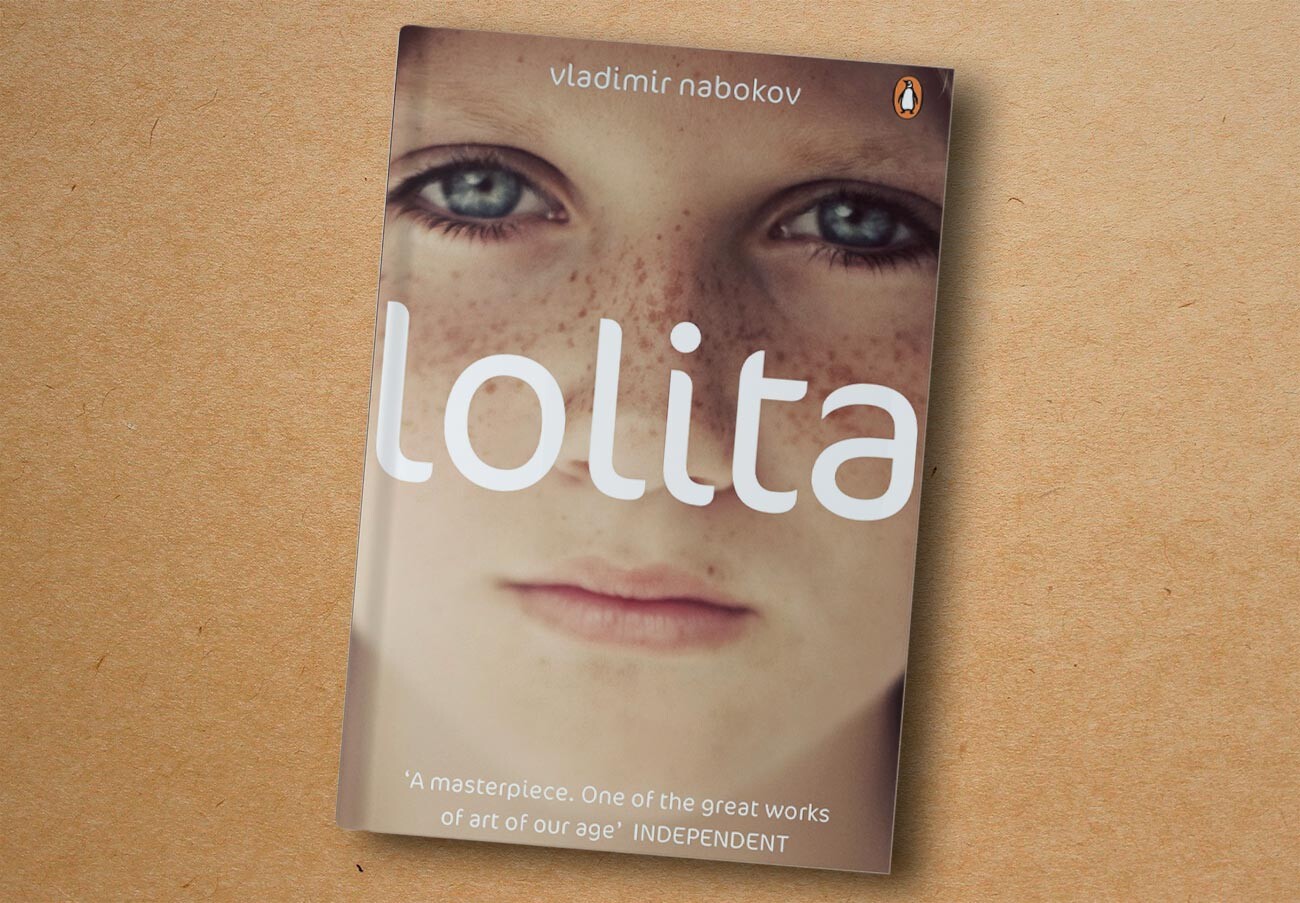
Penguin, 2011
Nabokov wrote his most famous novel in English and translated it himself into Russian twelve years subsequently. The story, in which the protagonist (Humbert Humbert) loses his moral compass and falls for a 12-yr-old girl named Lolita, shattered all canons, conventions and taboos. That said, "Lolita" is not a novel near sin, but a saga of obsession, irrepressible craving and self-flagellation.
67. Mikhail Zoshchenko. Stories about Lelya and Minka (1937-1945)
Zoshchenko, who possessed a rare sense of humor, equated the work of the writer with the production of white lead: both are toxic. His autobiographical tales, written betwixt 1937 and 1945, are a touchstone of the generosity of spirit and warmth of heart of one of the most underappreciated writers of the Soviet period. Although the collection of Lelya and Minka stories seems to be primarily for children, every adult will find much wisdom and sadness in them.
68 . Mikhail Zoshchenko. Before Sunrise (1943)
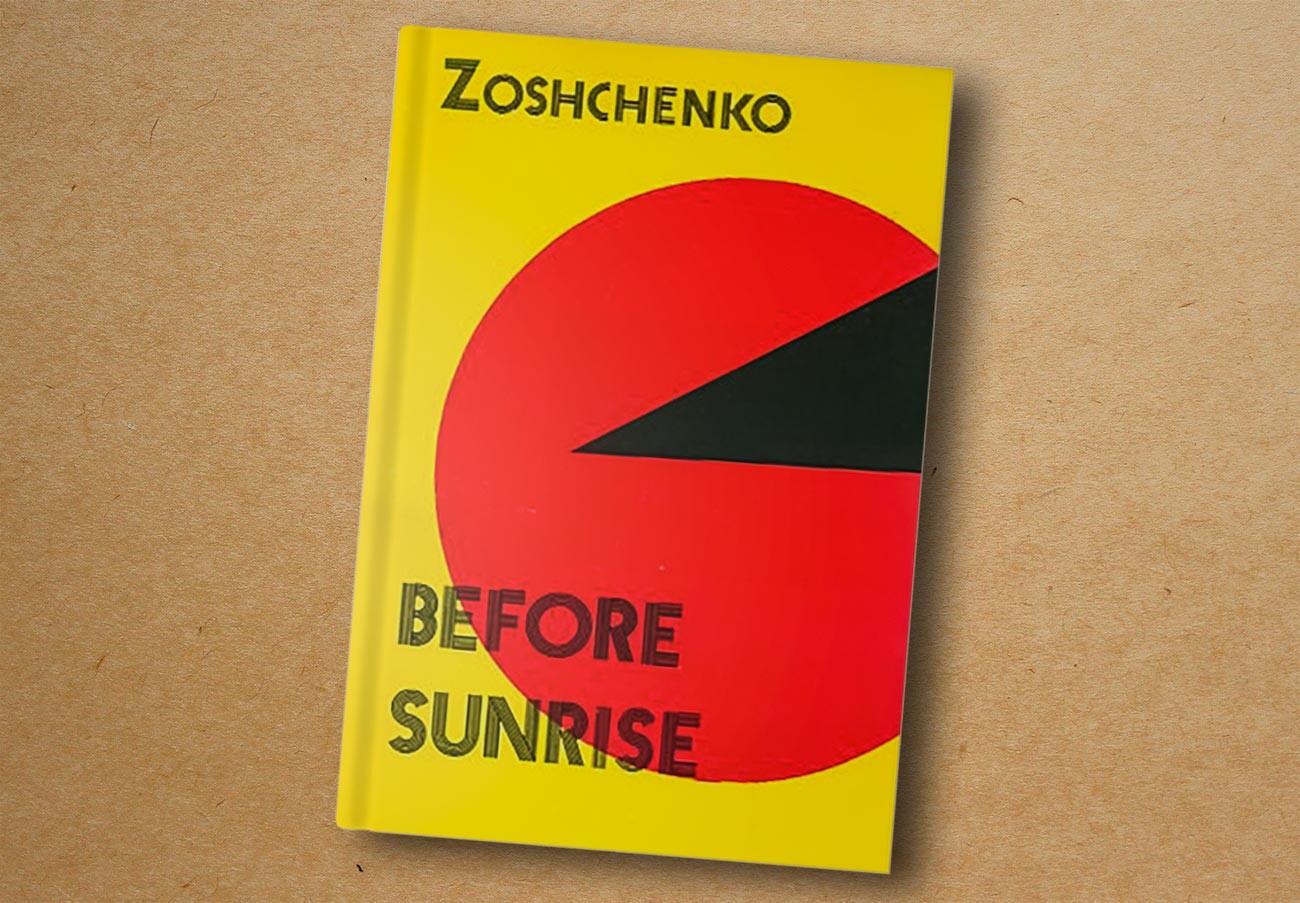
Ardis, 1974
In his confessional, highly personal "Before Sunrise", Zoshchenko acts equally his own psychoanalyst, ruthlessly dissecting his nearly intimate babyhood fears, traumas, anxieties and phobias, including fear of water, nutrient, thunder, his own trunk, poverty, the opposite sex, etc., etc. His personal experiences are described with such hard-hitting realism that in 1943, after publication of the first few chapters, the work was banned (Stalin is known to have detested it). Zoshchenko'southward encyclopedia of fears was start published in total simply in 1973, in the United States.
69. Daniil Kharms. The One-time Woman (1939)
During his lifetime, Kharms was not popular every bit an adult writer (especially with the Soviet government), and was known mainly as an author of nursery rhymes. The bulk of his work, which was familiar only to a small circle of literary connoisseurs, could not be published in the USSR, because Kharms was one of the founders of the Russian literary tradition of absurdism and surrealism. His story "The Onetime Woman" represents the pinnacle of his prose craftsmanship, i of the most enigmatic and occult works in Russian literature, echoing the European tradition of existentialism à la Camus and Sartre.
70. Yevgeny Schwartz. The Dragon (1944)
This playwright wrote one of his most impactful plays during World War Ii. A cruel dragon terrorizes the inhabitants of a small town, who are forced to constantly gratify the monster with sacrifices in the form of young nymphs. Eventually it is Elsa'southward plough, and the compliant townsfolk do not even endeavor to protect the poor girl. Why challenge a system that has been in place for the by 400 years? And yet, someone disagrees with the herd. Born with an innate sense of justice, the fearless Lancelot is determined to slay the Dragon.
Schwartz'south fantasy play has a ambiguous message for those able to read betwixt the lines: always fight evil monsters! Although on the surface it seems to be a "children's fairy tale/horror story", "The Dragon" is a breathy attack on Stalin, the Soviet authorities and totalitarianism. The play was first staged in 1943 and banned for many years thereafter.
71. Valentin Kataev. Son of the Regiment (1944)
Valentin Kataev was the outset writer in Soviet literature to tell about the state of war through a child's optics. During the state of war years, very many orphaned children were attached to Red Army regiments, some of whom became known every bit "sons of the regiment." The stories of several children are known, merely which of them Kataev based his hero on is not. In the story, the male child Vanya Solntsev, who has lost his parents during the war, is discovered past a scout party and does non want to return to the rear, preferring to remain with the soldiers on the front line. When he is forced to go back, he flees. In the stop, the child is allowed to stay and even take part in combat missions.
READ MORE: How Soviet kids became state of war heroes
72 Boris Pasternak. Doctor Zhivago (1945-1955)

Vintage; Reprint edition, 2011
The Start Earth State of war was a catastrophe for Russia, burying the dreams of an unabridged generation. In his outstanding modernist novel, "Doctor Zhivago," Pasternak paints in broad strokes non only the devastating war, the destructive power of the revolution and the dashing of hopes, but as well the resilience of the homo spirit.
"Doctor Zhivago", a tale of an unquenchable love stronger than decease, is perhaps the all-time-known 20th-century Russian novel in the Westward. Pasternak worked for ten years on the book, for which he was awarded (only forced to refuse) the Nobel Prize in Literature in 1958.
73. Alexander Fadeyev. The Young Guard (1946)
The first edition of this novel was published immediately afterwards the war in 1946. It charts the exploits of immature underground activists who class the "Young Baby-sit" secret partisan organization in Krasnodon (at present Ukraine), which resists the Nazis. Well-nigh all members of the existent Young Guard were brutally tortured and executed by the Germans. It is about them, based on eyewitness accounts, that Fadeyev wrote. When the book came out, yet, it was harshly criticized by Stalin for supposedly analytical the role of the Communist Party in the anti-fascist struggle. Fadeyev had to rewrite the novel, and a 2d, revised edition was published in 1951.
74. Alexander Solzhenitsyn. The Gulag Archipelago (1958-68)
The world'south best-known volume well-nigh the Soviet camps took ten years to write. Divided into seven parts, "Archipelago" describes the history and practise of the Soviet Gulag (a Russian acronym that stands for "Main Directorate of Camps"). The book is based on the personal experiences of the author, who spent around eight years in various camps, and the stories of more than 250 inmates with whom he spoke. Shortly afterwards the publication in Paris of the first book (December 1973), Solzhenitsyn was expelled from the USSR, and all his previously published works were destroyed (at to the lowest degree those the regime could find).
75. Varlam Shalamov. Kolyma Tales (1954-1973)
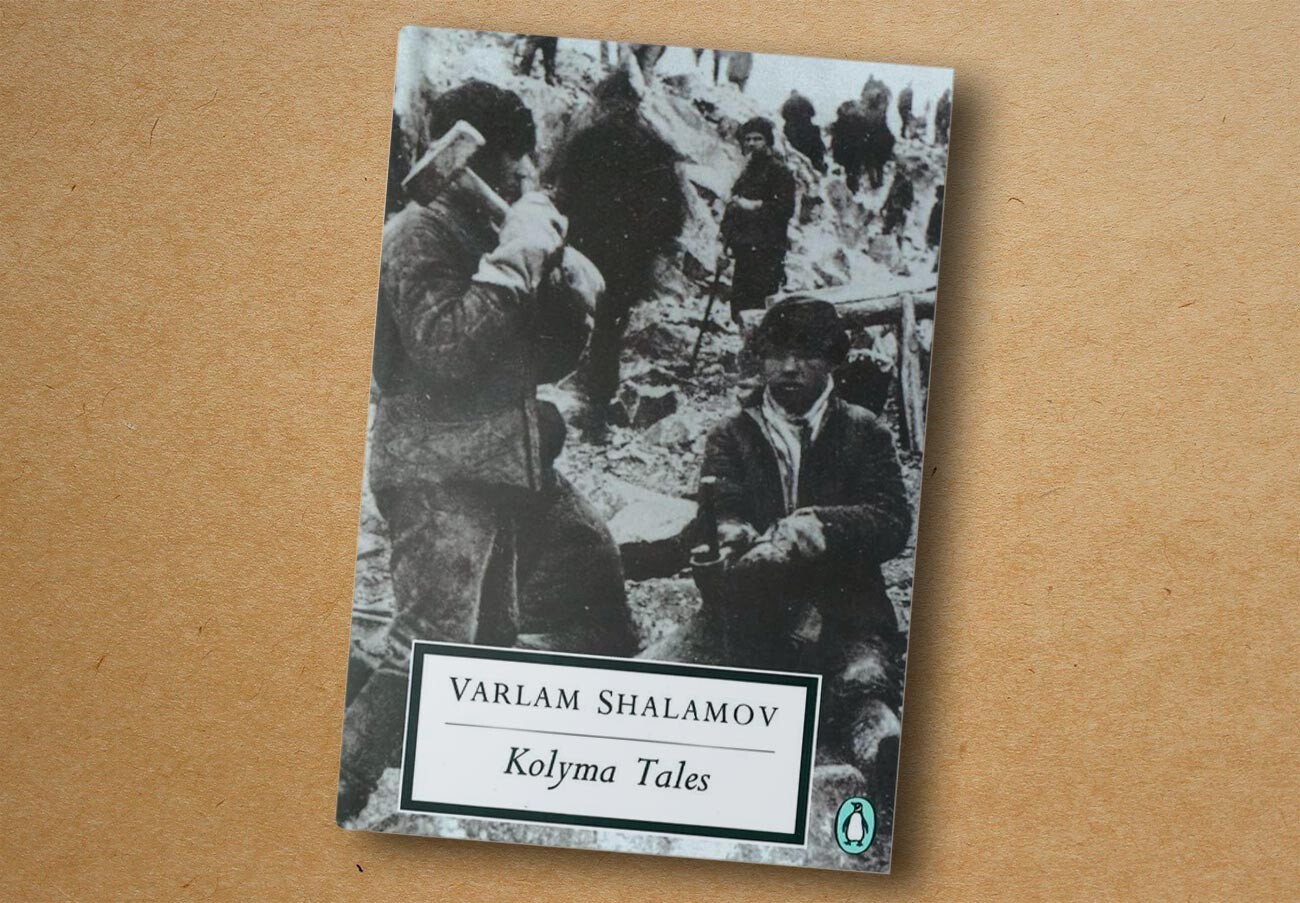
Penguin Classics, 1995
Kolyma Tales is strikingly different from whatever other camp prose, primarily Solzhenitsyn's The Gulag Archipelago (the two authors maintained a fiery correspondence). Shalamov'due south focus is on what can happen to the human trunk and soul in the penal camps, which aim to crush individuality and personality, and ofttimes destroy a person physically. His ain health ruined by 19 years in the Gulag, he nevertheless left for posterity a brutal and terrifyingly truthful business relationship of one of the most ruthless repressive systems in history.
76. Vasily Grossman. Life and Fate (1959)
"Everyone feels guilty before a mother who has lost her son in state of war; throughout human being history men have tried in vain to justify themselves," wrote the author of Life and Fate, a sweeping novel that unfolds against the backdrop of the titanic Battle of Stalingrad from September 1942 to Feb 1943. Life and Fate is a relentlessly bleak tale almost the hardships of war, with no hint of light at the cease of the tunnel.
77. Kir Bulychev. Alisa's Adventures (1965-2003)
This bike of (more than 50!) books, stories and novellas by scientific discipline fiction writer Kir Bulychev (real name Igor Mozheiko) is familiar to all Soviet children not merely in print, but as the pop Soviet Goggle box miniseries Guest from the Future. The main character in the wheel, Alisa Selezneva, lives in a distant future world designed co-ordinate to the laws of what seems similar Soviet steampunk. Utopian communism reigns: there are no regime, everything is governed past scientists with supernatural powers. In many means information technology is the ideal world, one where interplanetary travel and time travel are possible. It is these sci-fi tropes that enable Alisa to transport herself from "her" 2084 to Soviet 1984.
78. Venedikt Yerofeyev. Moscow to the Cease of the Line (1969)
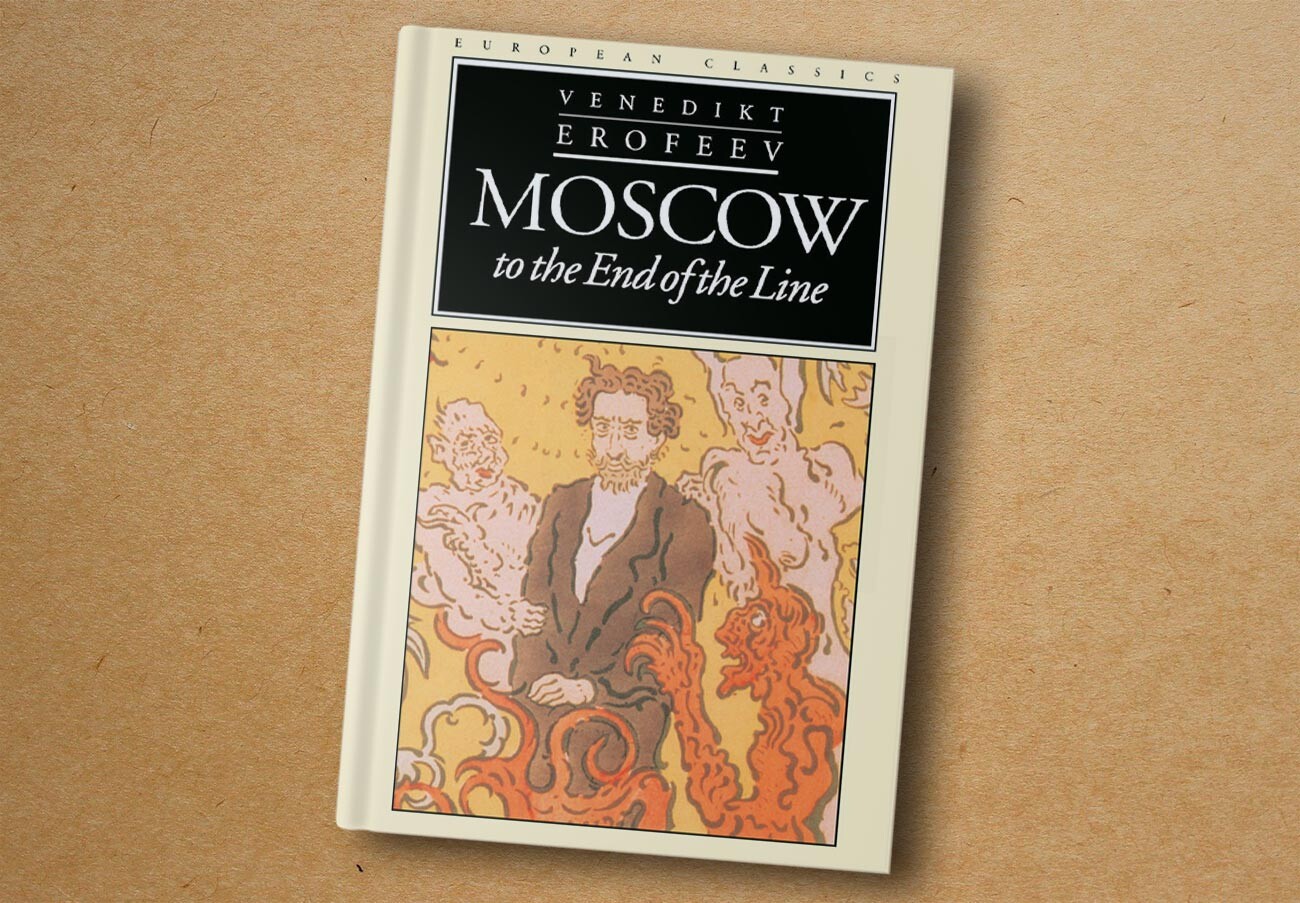
Northwestern University Press, 1994
Yerofeyev had ane of the most bright minds of his generation: he quoted Kant and Leibniz and could recognize whatever symphonic work by ear. At the same fourth dimension, he was an outcast, expelled from his institute for free-thinking and forced to make ends run into doing odd jobs. Whilst working on a construction site outside Moscow, he equanimous the prose poem "Moscow-Petushki" (a.k.a "Moscow to the Cease of the Line"), which, despite beingness in prose, is Russian literature's reply to Dante's "Divine Comedy".
The poem's protagonist attempts to travel from Moscow'southward Kursk railway station to his married woman and son in the town of Petushki nigh the capital. With a bottle of vodka in hand (an integral part of the Soviet reality of that era), he journeys through all the circles of Soviet hell (alas, there is no paradise, or even purgatory, in this gloom-laden work). The last strolling minstrel of Russian literature, Yerofeyev, through laughter and tears, created a terrible requiem for the Soviet era, a poem that survived and largely destroyed its creator: the writer died from the furnishings of alcoholism merely ane twelvemonth before the plummet of the USSR.
79. Arkady and Boris Strugatsky. Roadside Picnic (1972)
The most popular (published in 22 countries) of the Strugatsky novels is a sci-fi dystopia set in the English language-speaking globe, in the fictional boondocks of Harmont. A few years before the events of the book, an alien civilization or entity visited World, leaving behind several "Zones" - areas total of unexplained phenomena where strange happenings occur. As 1 of the characters remarks, it resembles a kind of extraterrestrial roadside picnic, after which strange phenomena and objects were left strewn like empty bottles and food wrappers. Earthlings who dare to explore the Zones are called "stalkers" ("Roadside Picnic" was the literary source of Andrey Tarkovsky'southward classic 1979 film "Stalker"). The volume'southward twisting plot follows a stalker who ventures into one of the Zones in search of that very man even so inaccessible desire: happiness.
80. Eduard Limonov. It's Me, Eddie (1976)
Limonov'south first and nigh famous novel was a awareness: written and first published in New York, it was the first Russian-linguistic communication book to contain explicit, graphic prose in the manner of Charles Bukowski and other American writers of the latter half of the 20th century.
Limonov dispassionately describes the physiological details of hetero- and homosexual sex acts and peppers his characters' spoken communication with obscenities. But more than than that, information technology is an autobiographical statement nearly the feelings of a lyrical hero, an emigrant, a slice of homo debris cast out by the Soviet empire and by fate herself into the arms of a new, unknown life.
Fifty-fifty in post-Soviet Russian federation the novel had trouble finding a publisher, with many printing houses refusing to handle the "obscene" text. Besides its content, the work is a linguistic and mode-of-life monument to that most fraught era for Soviet emigrants.
81. Fazil Iskander. Rabbits and Boa Constrictors (1982)

The Overlook Press, 2014
"I am a Russian author, but a singer of Abkhazia," said the Batumi-born Iskander. He was nominated for the Nobel Prize for his opus magnum: "Sandro from Chegem," a truthful ballsy in celebration of Abkhazia. A bigger hit amongst Soviet intellectuals, however, was "Rabbits and Boa Constrictors," a philosophical parable about the relationship between the upper and lower strata of society, as exemplified by a make-believe country of rabbits and boa constrictors ("the model demagogic land").
Many quotations from the book have become Russian proverbs ("Where at that place is talk of victory, they have either forgotten, or are hiding from, the truth"), and the author's name is sometimes mentioned in the same breath as such greats every bit Anton Chekhov, Leo Tolstoy and George Orwell. He has also been described equally the "Russian Gabriel Garcia Marquez."
82. Chingiz Aitmatov. Scaffold (1986)
A Soviet author hailing from a Kyrgyz village, the bilingual Aitmatov glorified two cultures at once: he wrote in Russian, simply his words painted Kyrgyzstan and Central Asia and their
Source: https://www.bignewsnetwork.com/news/272323459/100-masterpieces-of-russian-literature-you-should-read
0 Response to "Catherine the Great and the Transformation of Russia Read Online"
إرسال تعليق